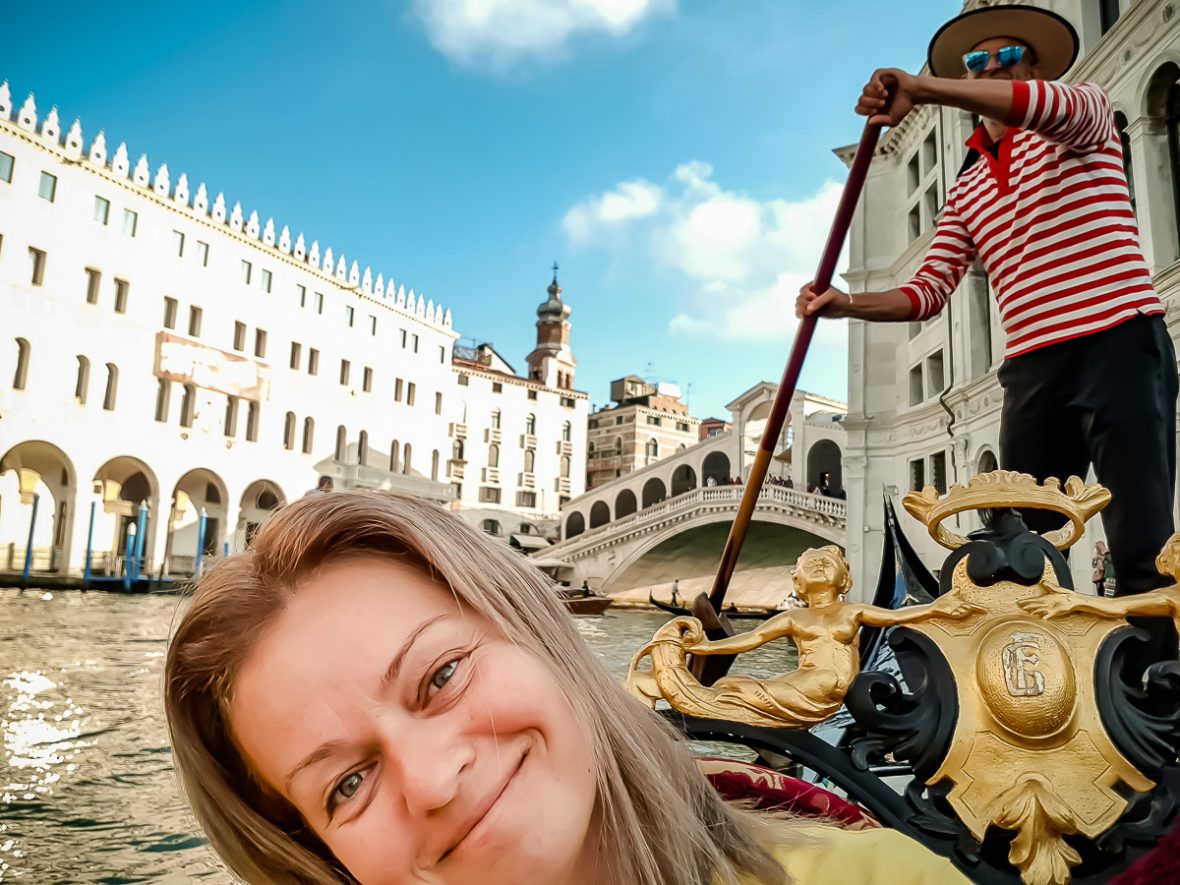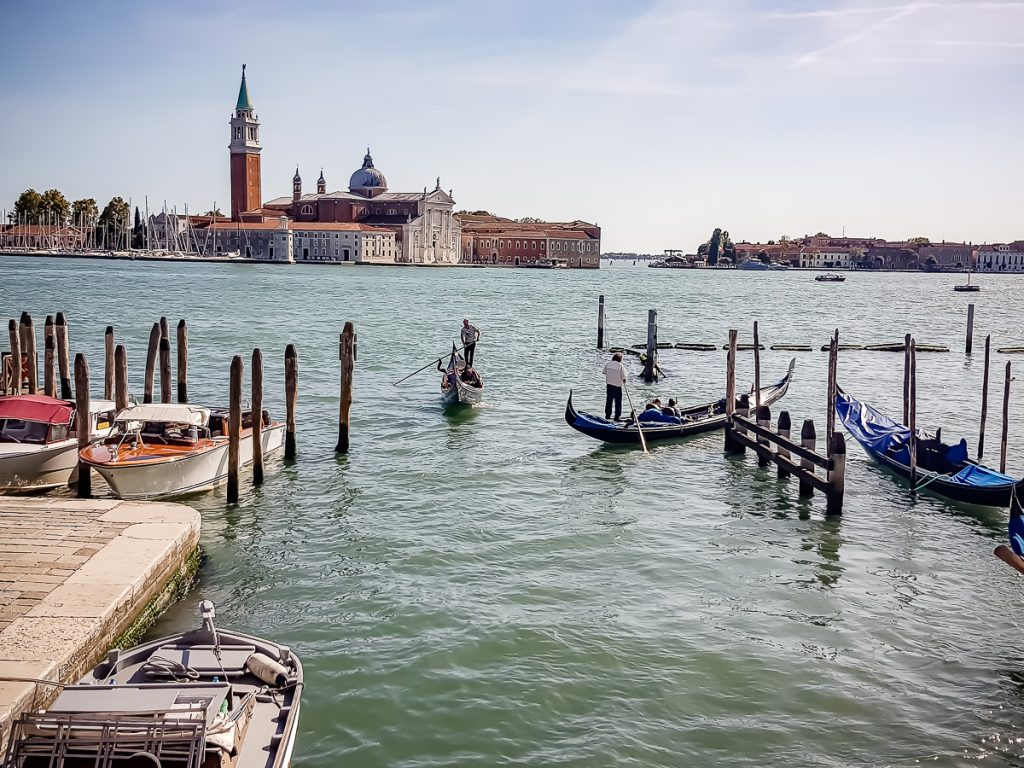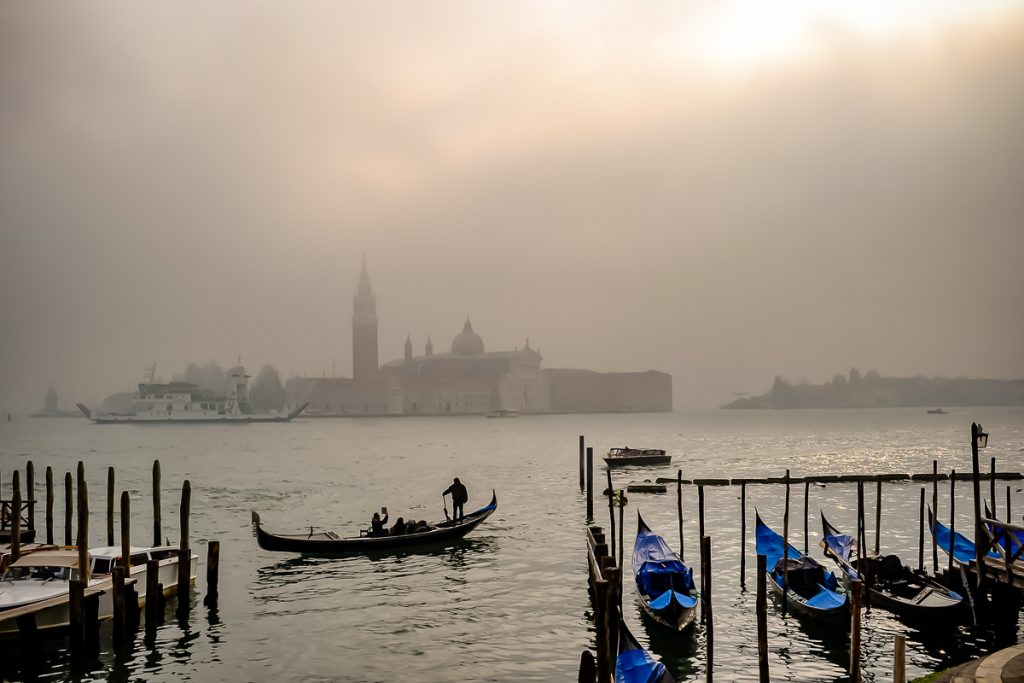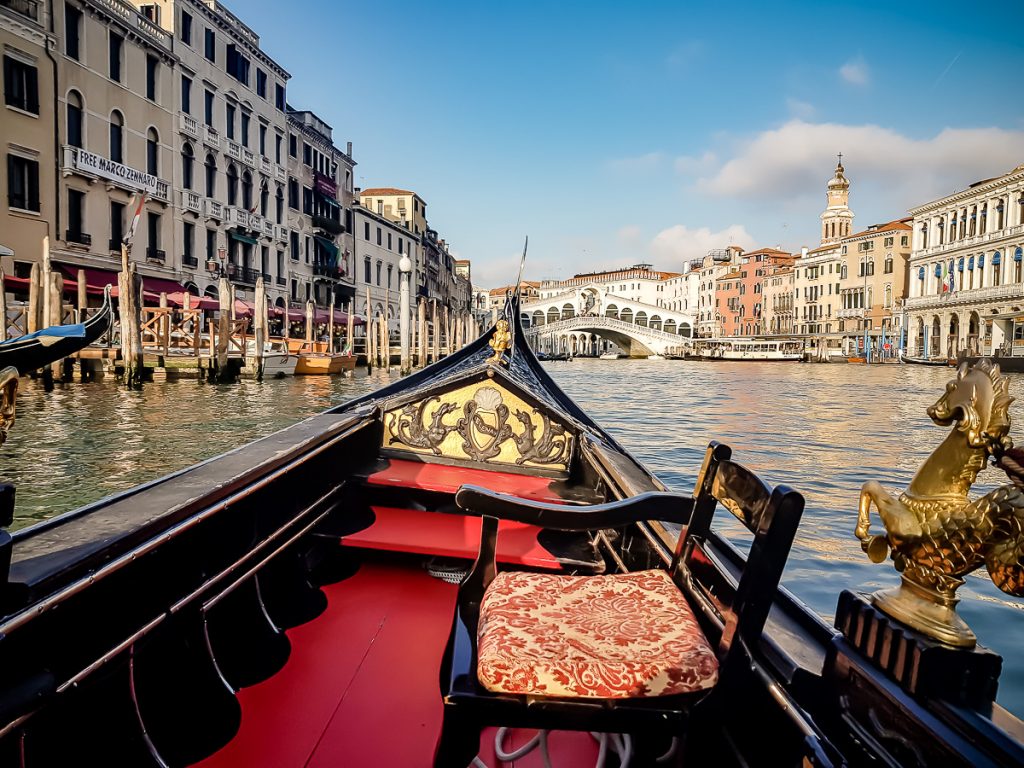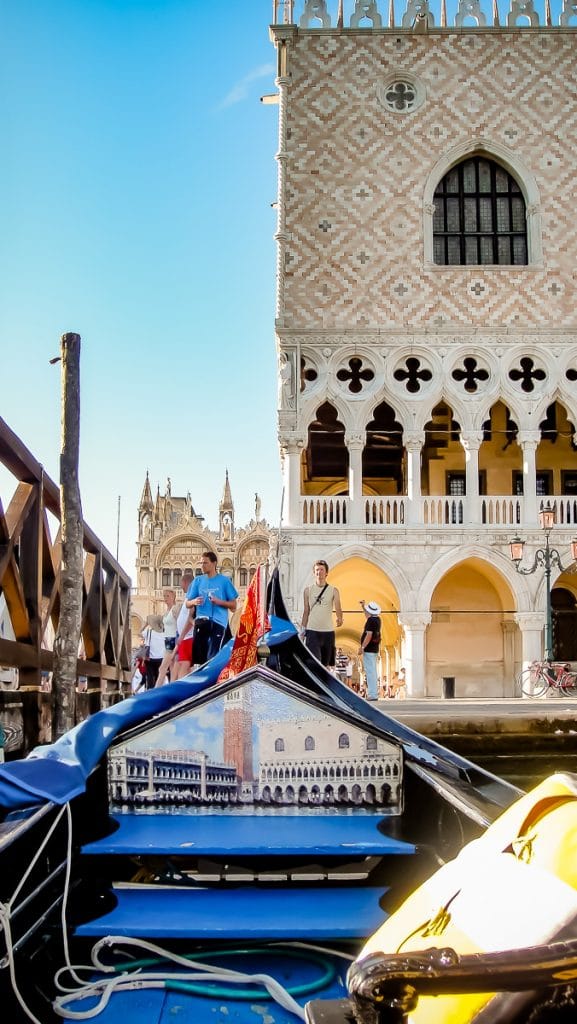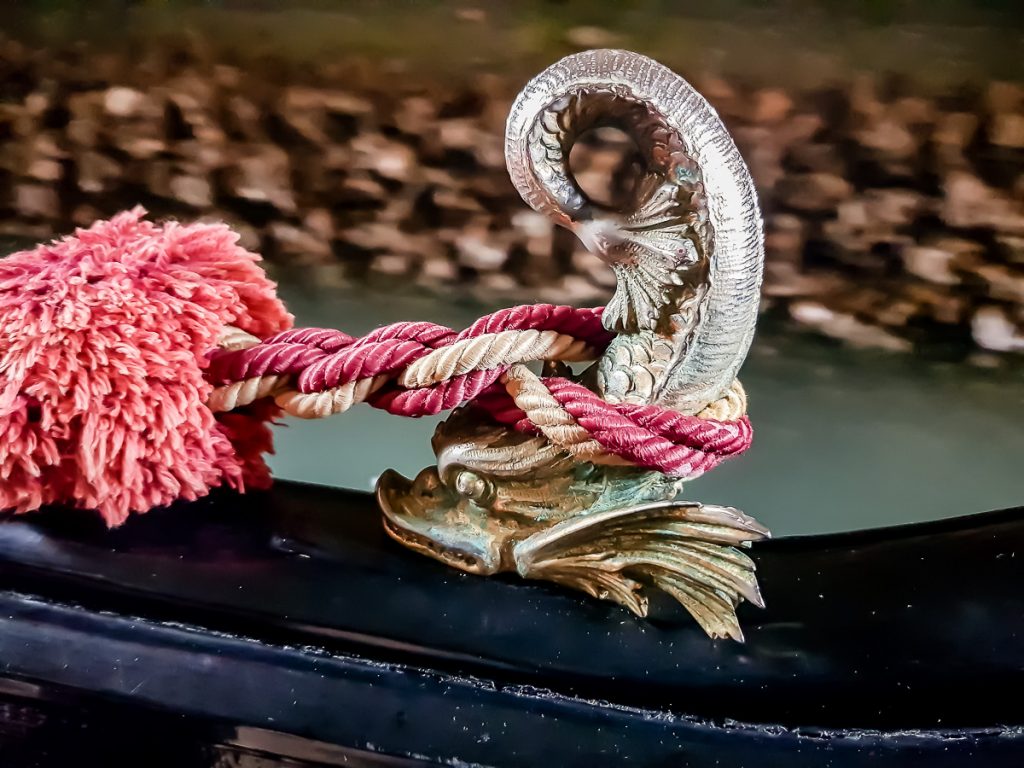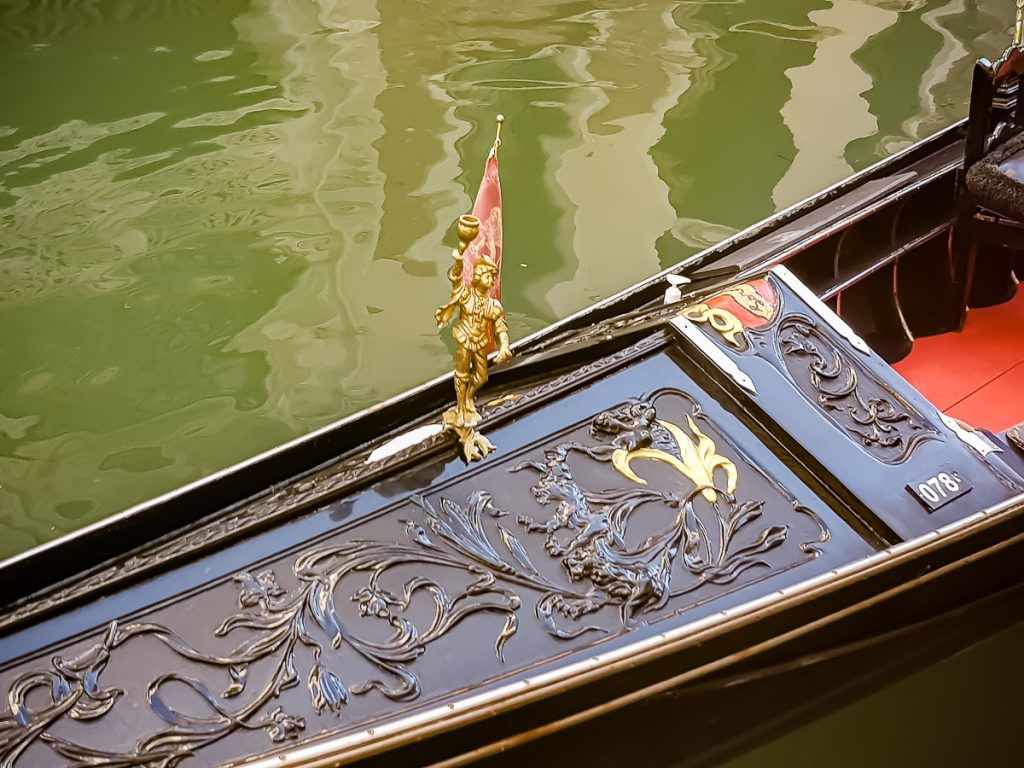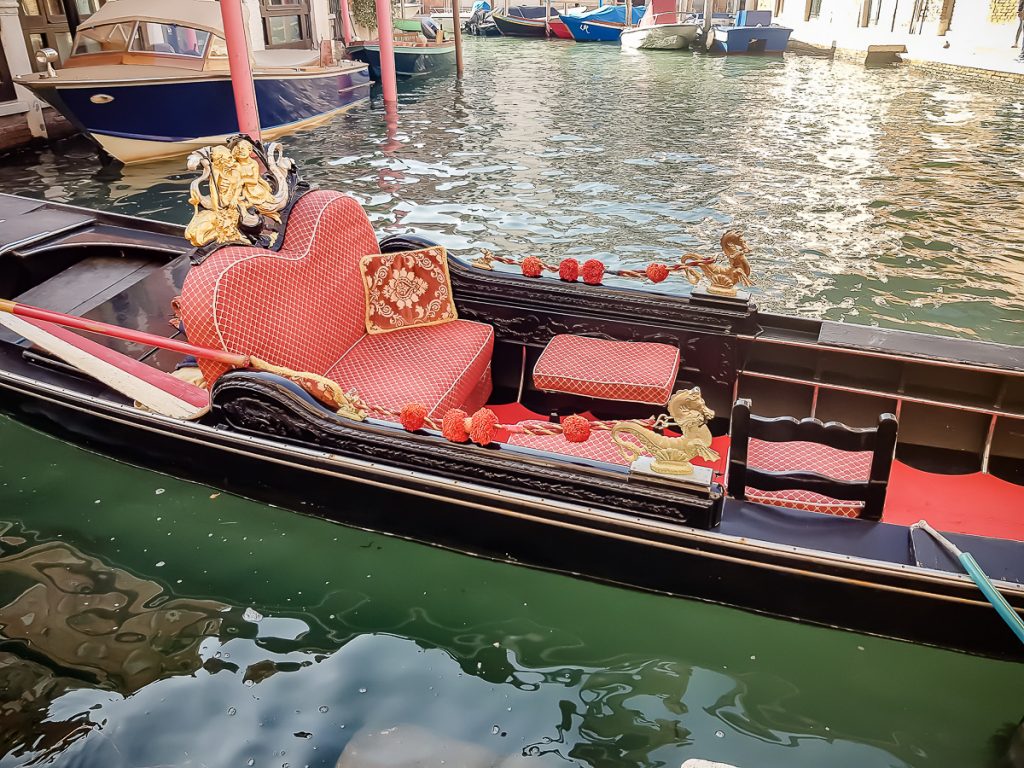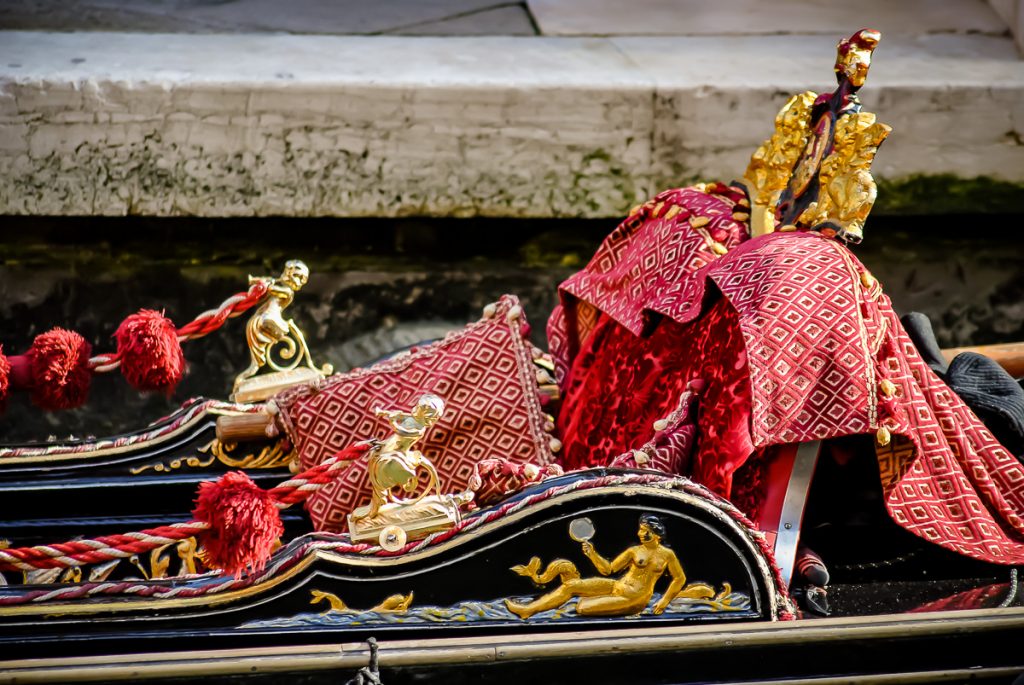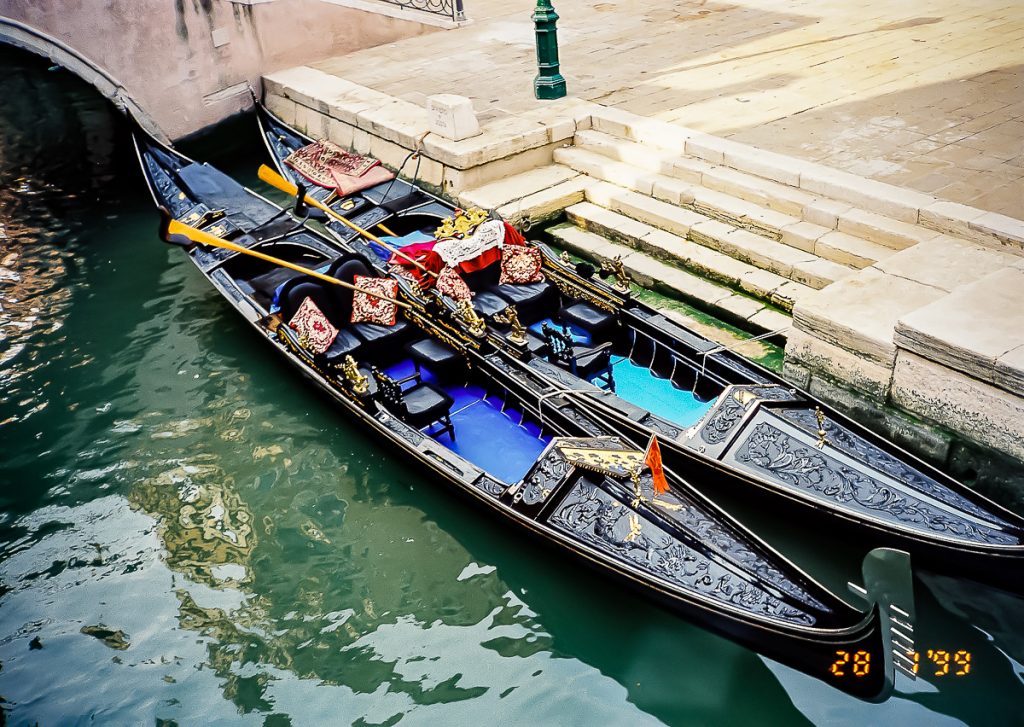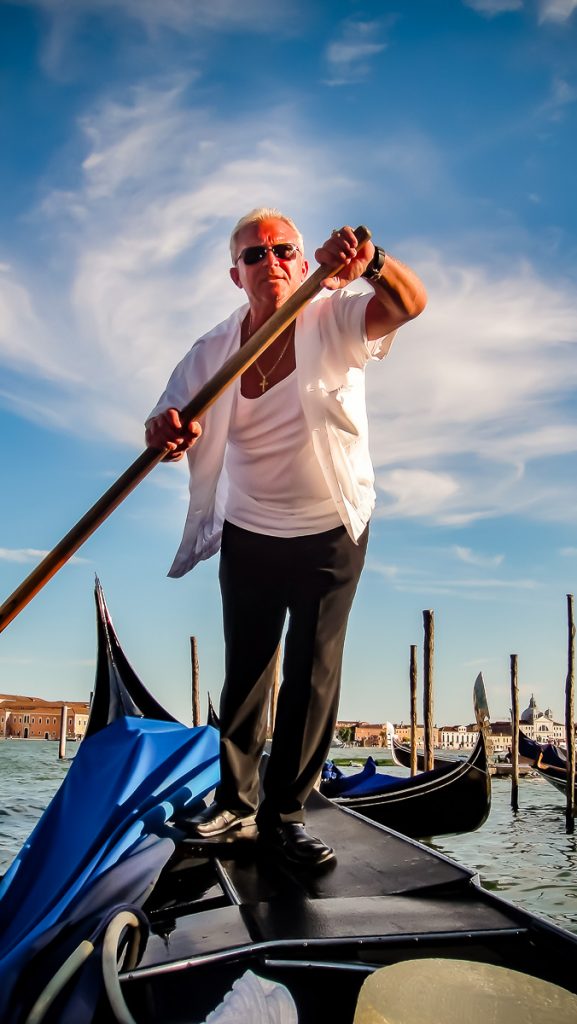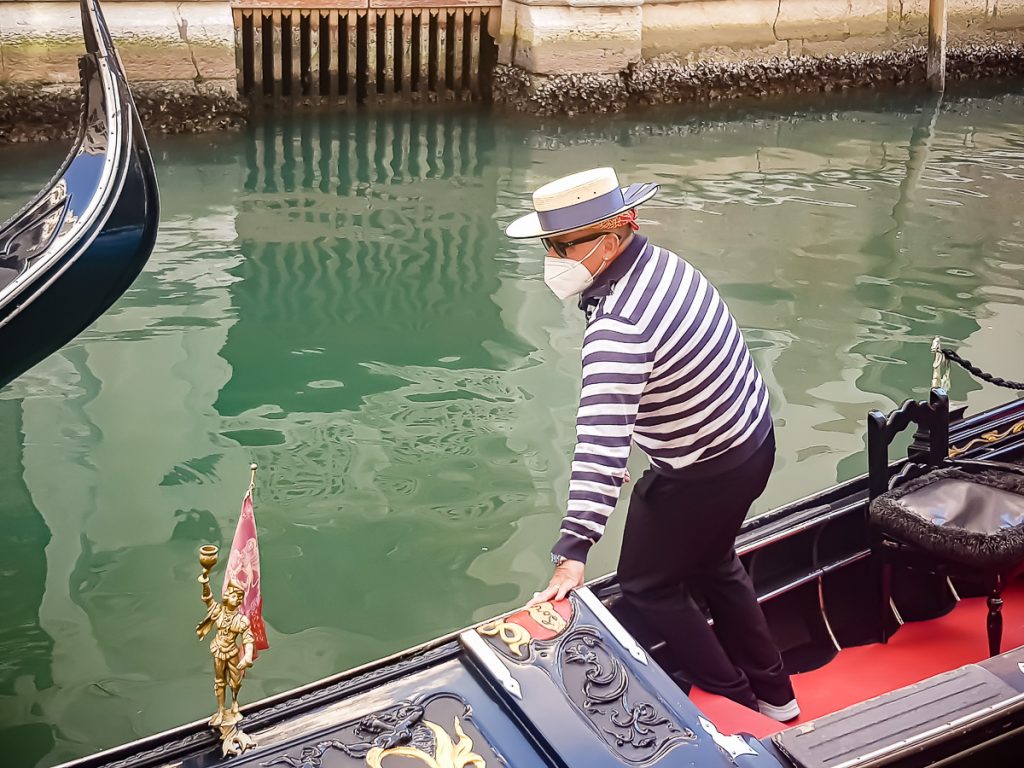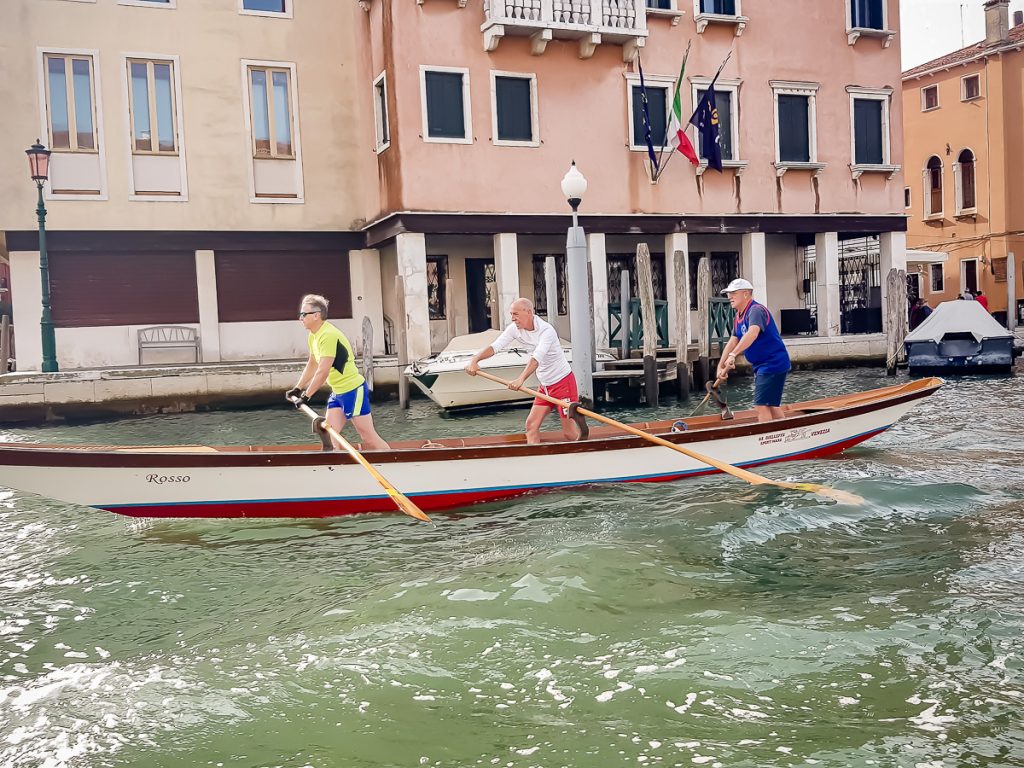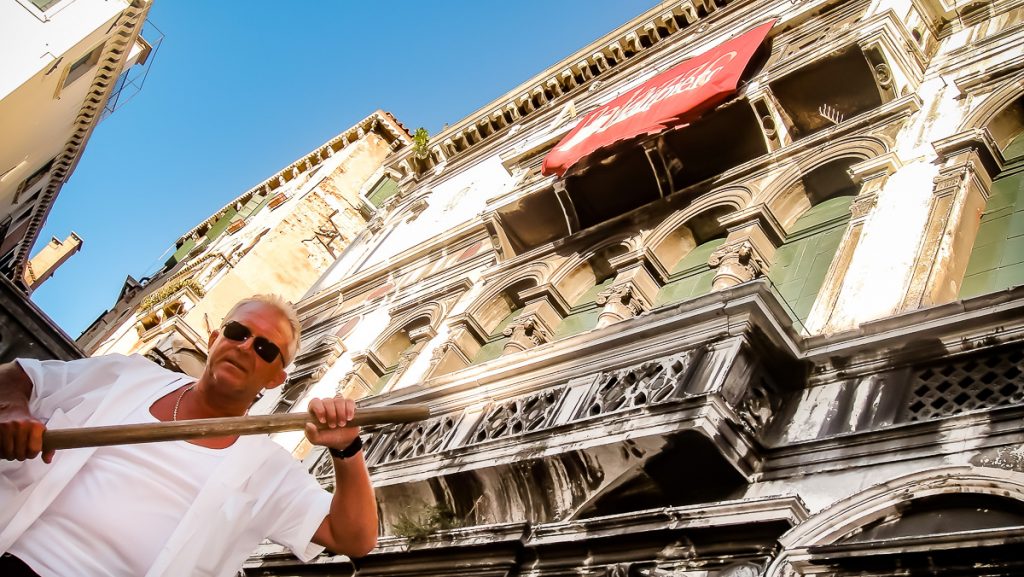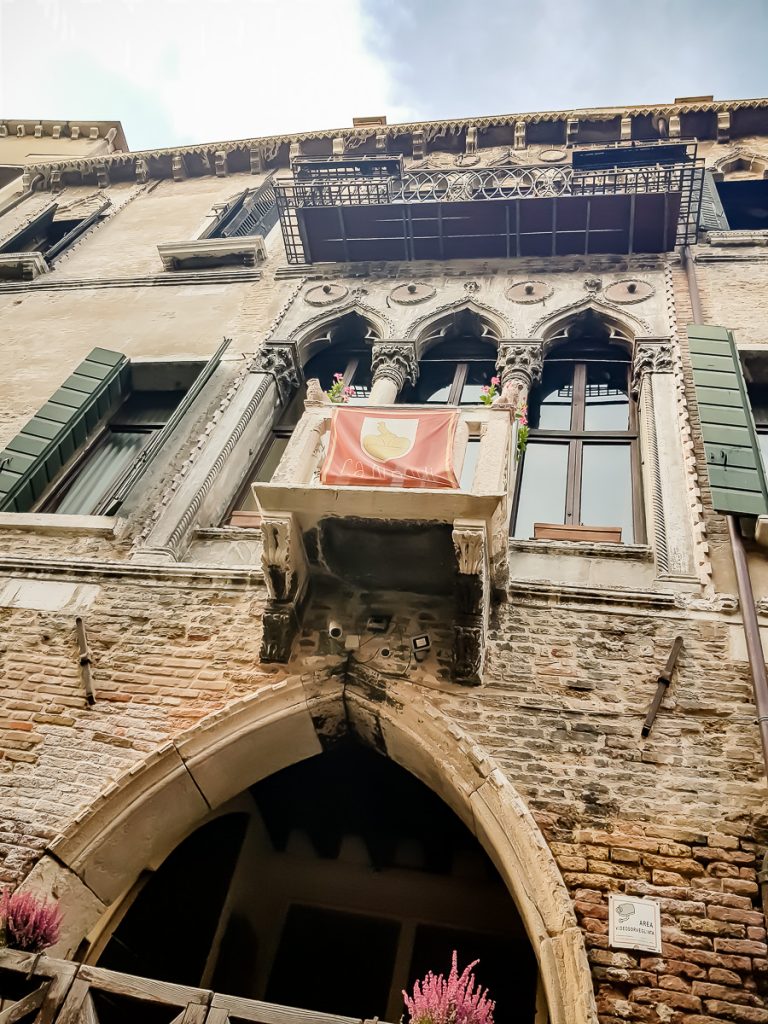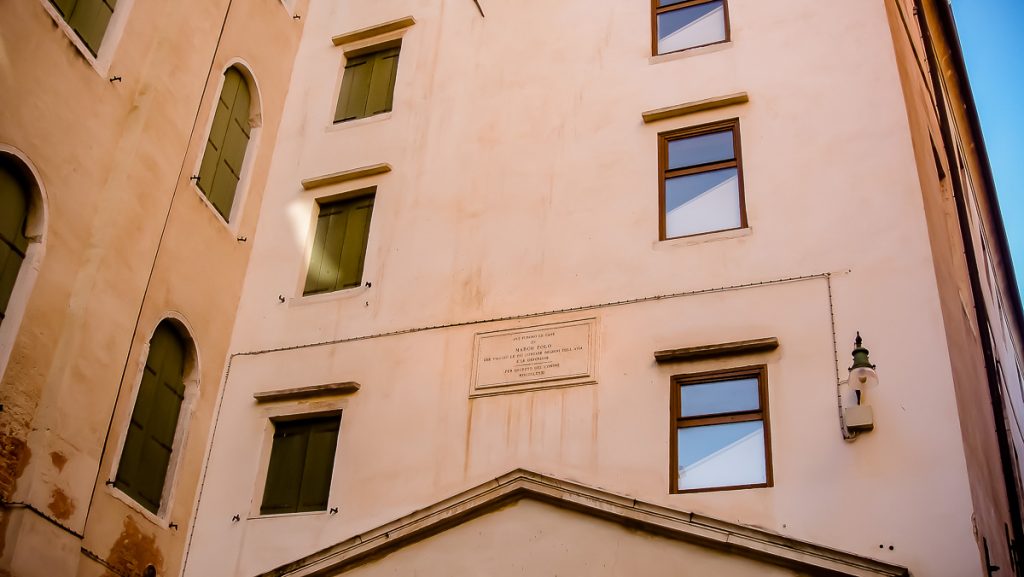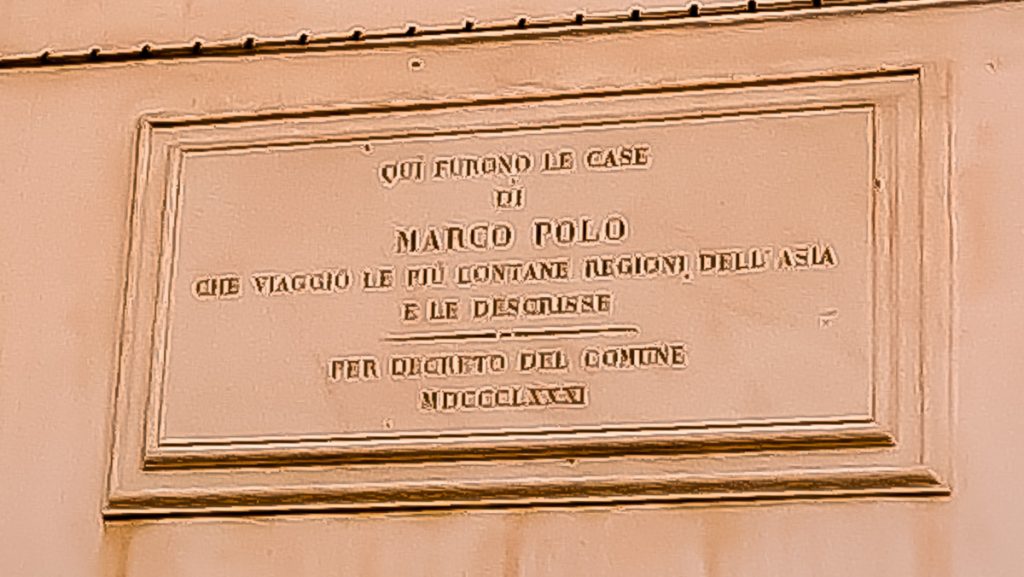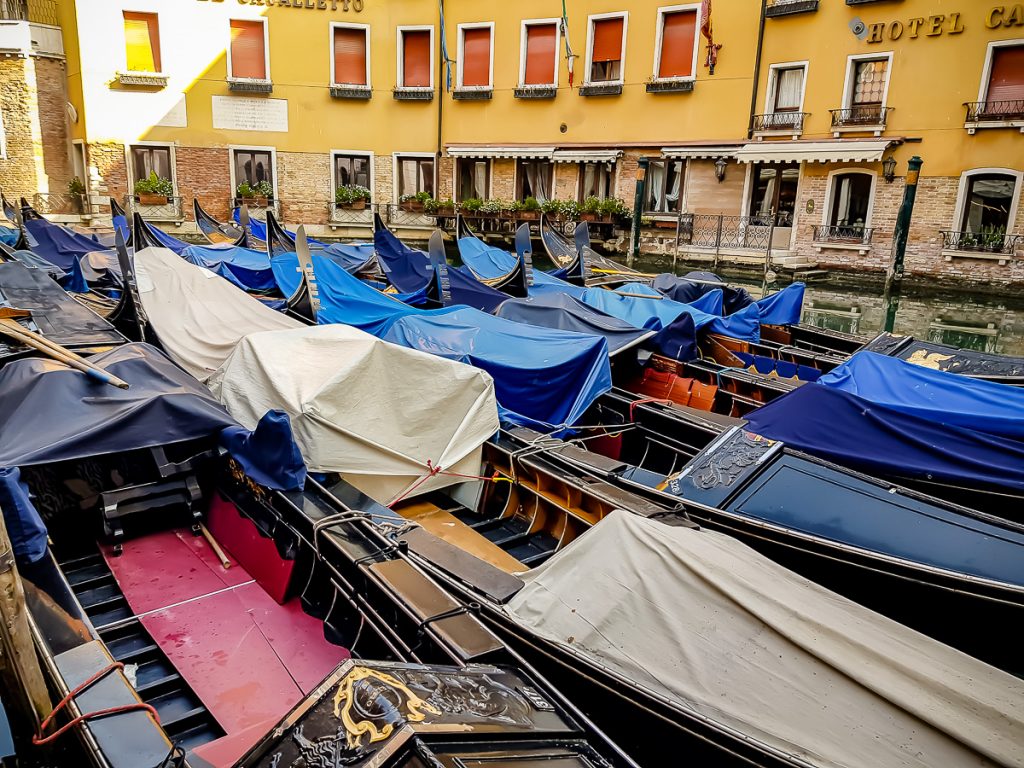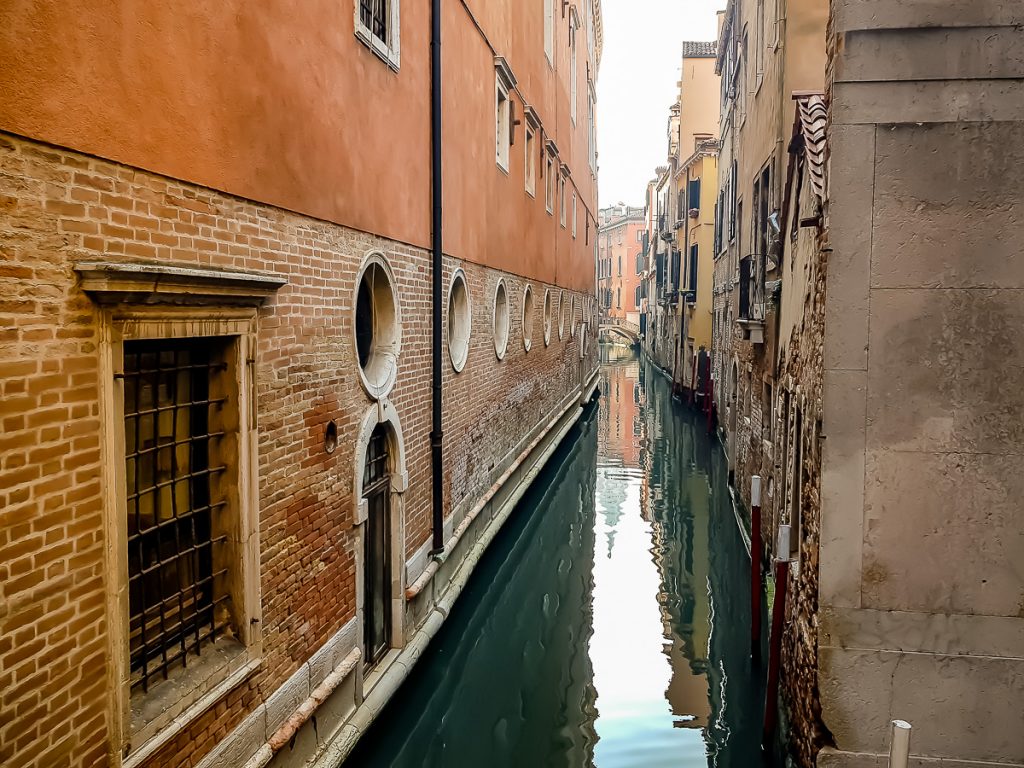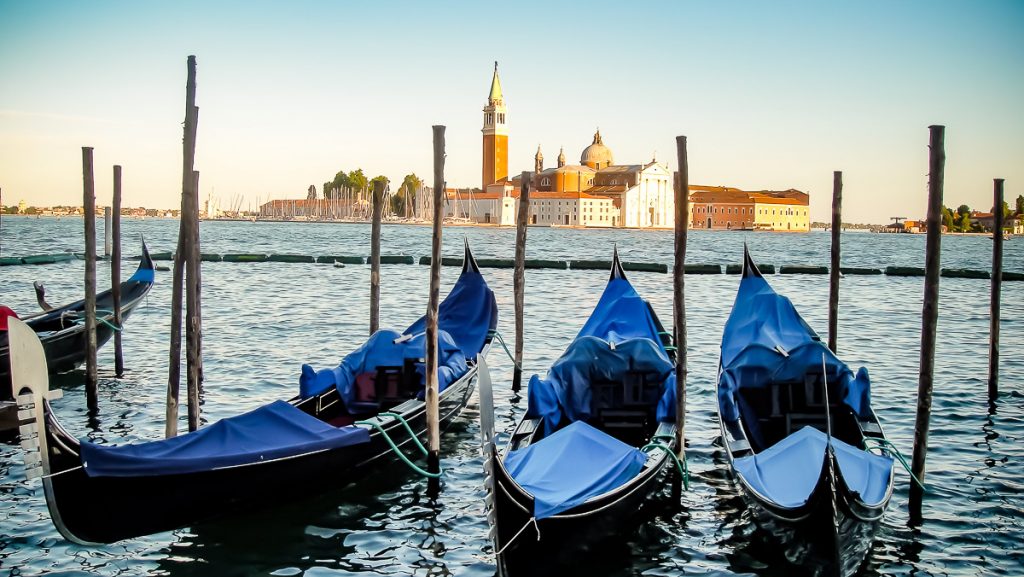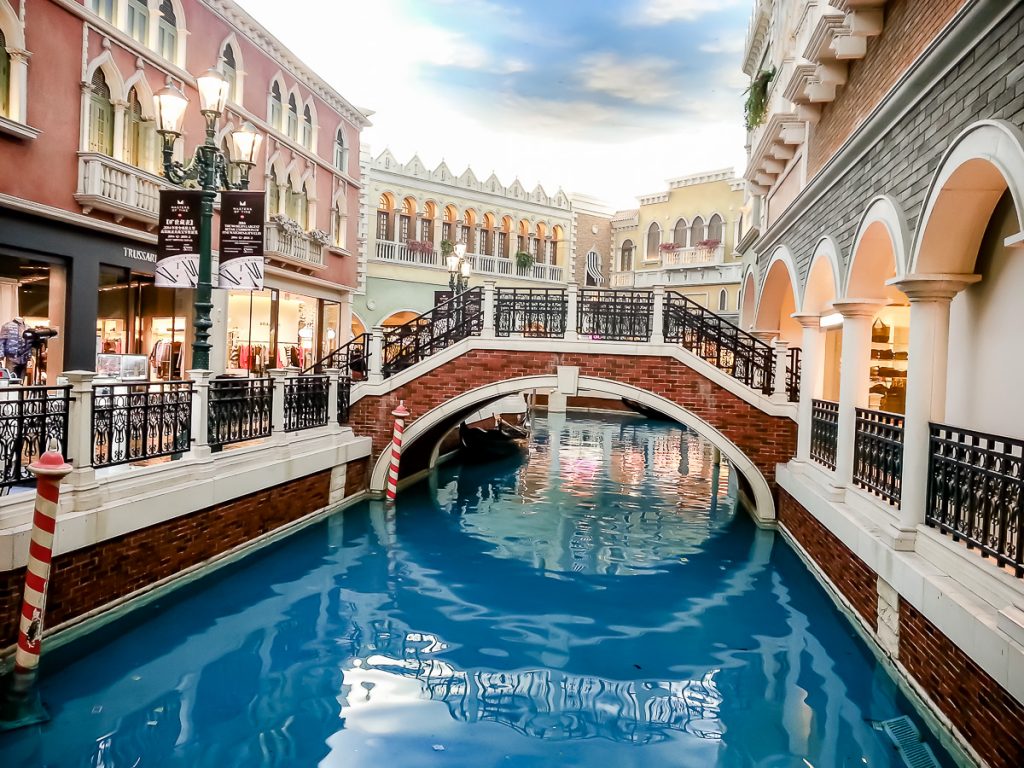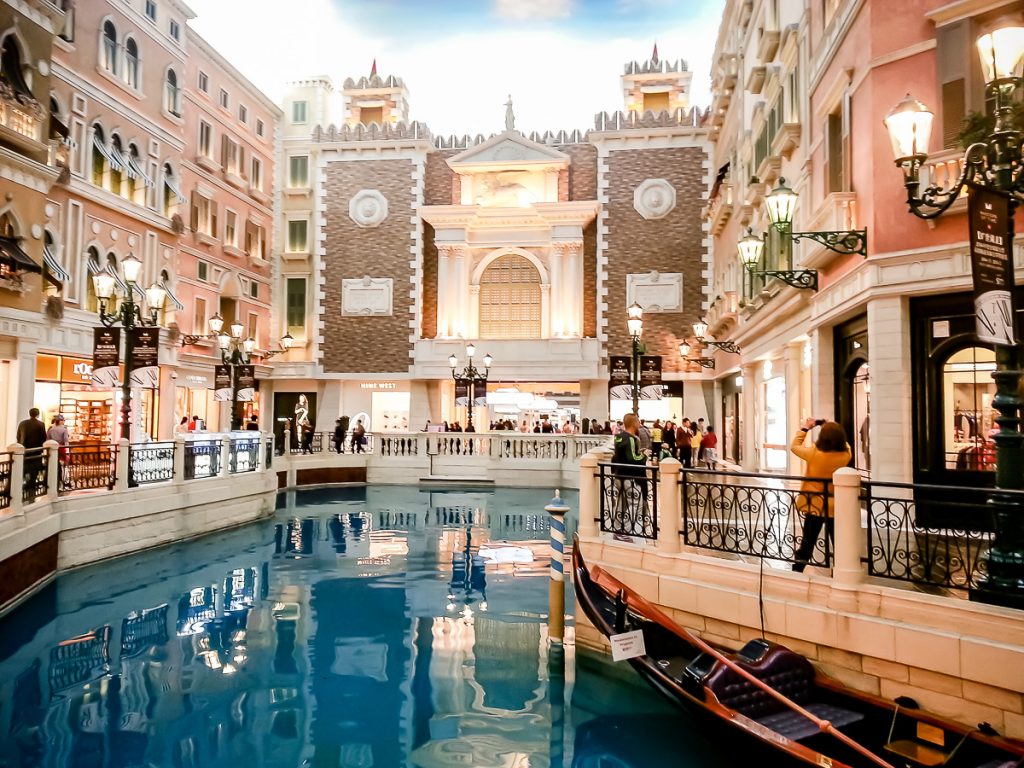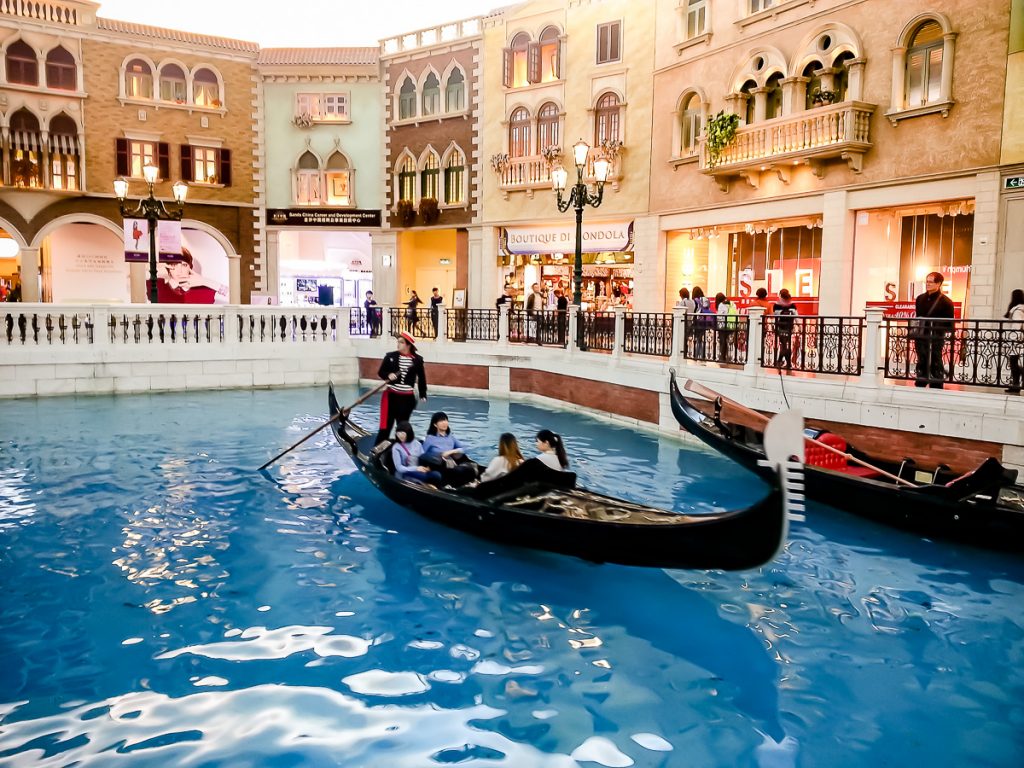Too expensive, my man, too expensive – I said to myself every time I arrived in Venice and I wanted a gondola ride.
80 euros for a 30 minute tour or, if you want to take the tour in the evening, the “romance” style, 100 euros.
Whether I was on vacation economy style or I had a better financial situation, I still didn’t feel like paying 80 euros…
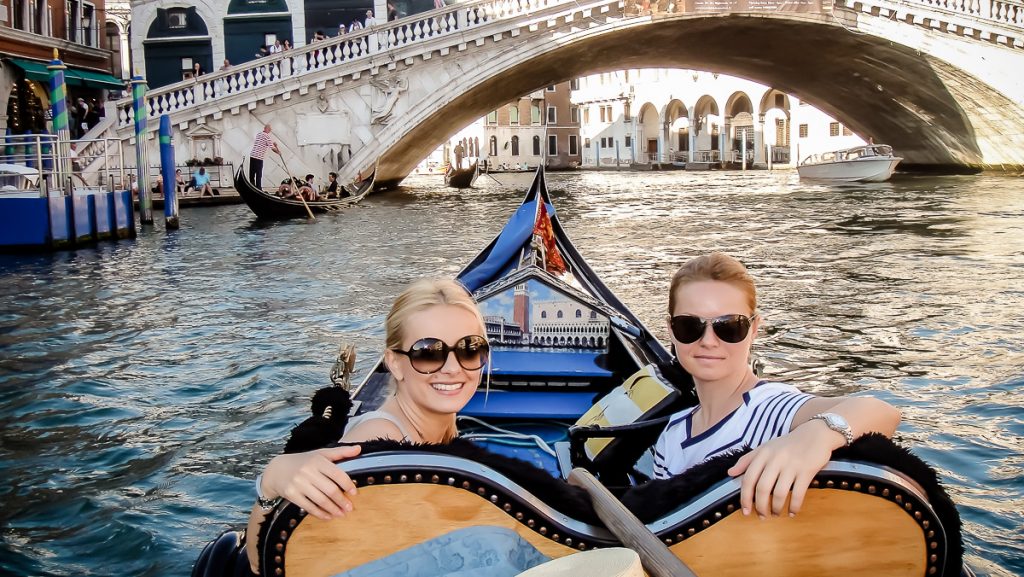
…that is until a few years ago, when, together with my friend Simona, we decided to treat ourselves with this.
A nice tour, a gondolier who gave us some interesting information, we blinked and… the tour was over.
VENETIAN GONDOLA
Venice has an impressive number of canals. There are 177, no, 155… or wait, some are already averaging to 160 and this is it, case closed J. And the boat that “fills” these canals most beautifully is the gondola.
Curious by nature, I’ve been browsing through books, I’ve been searching the internet to see what’s with these gondolas that fascinate so many people.
It all started with the shallow water of the lagoon (2 meters on the small canals and up to 5 meters on the Grand Canal), with a flat and swampy bottom, which have imposed a flat-bottomed boat since ancient times. The bridges were few and far away from each other, so the need for transportation was obvious.
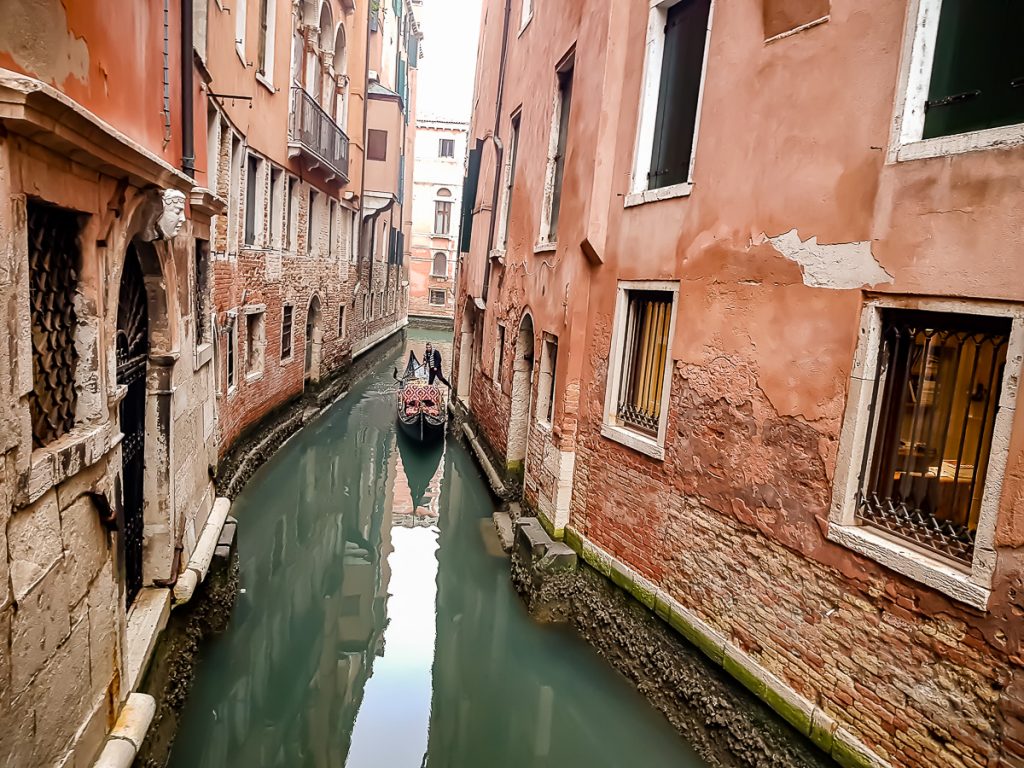
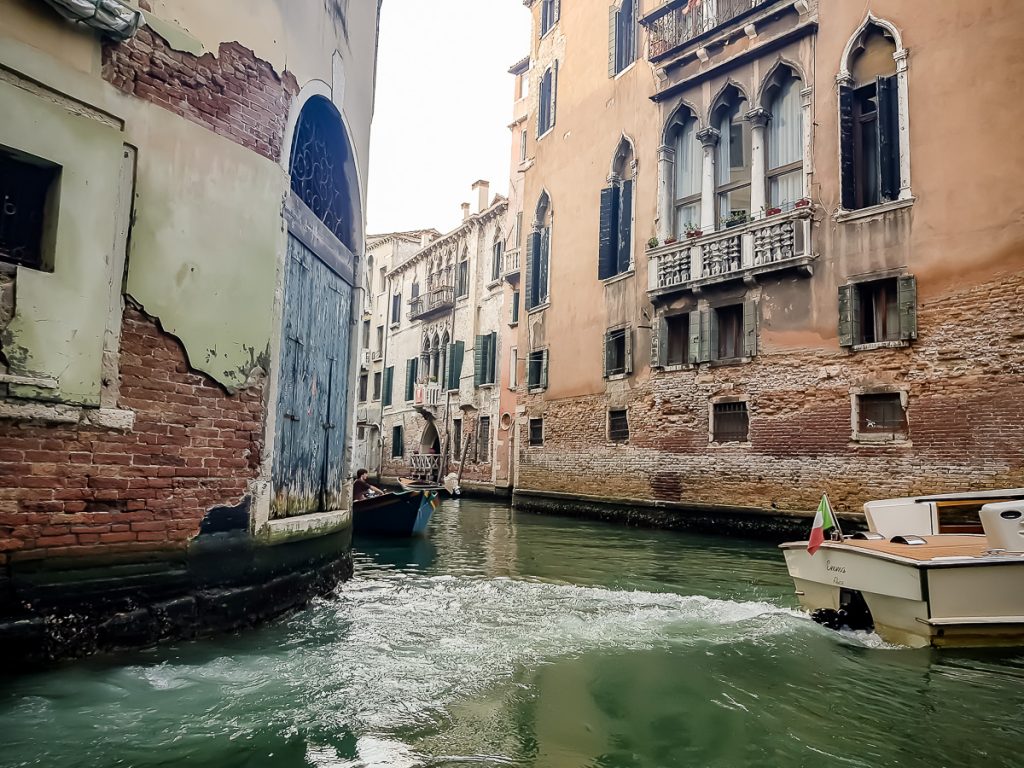
In addition, on the narrow canals, with tight intersections, only such a boat could have gone, with a paddle upright, so that it could move without elbowing through…
The origin of the gondola is shrouded in mystery, often grimly described by writers.
What is certain is that the gondolas floated on the canals from the beginning of the 11th century, as evidenced by the first documentary proof – in 1094, when the word “gondola” appears in the content of a law designed to regulate the movement of boats in the lagoon. But there are scientists who claim that gondolas existed before 697 – the time of the first doge. I find it very cool! The old gondola is still holding up, man J. It was lucky to have some skilled people, the master carpenters of Venice, who always built the gondolas according to precise rules, transmitted only orally.
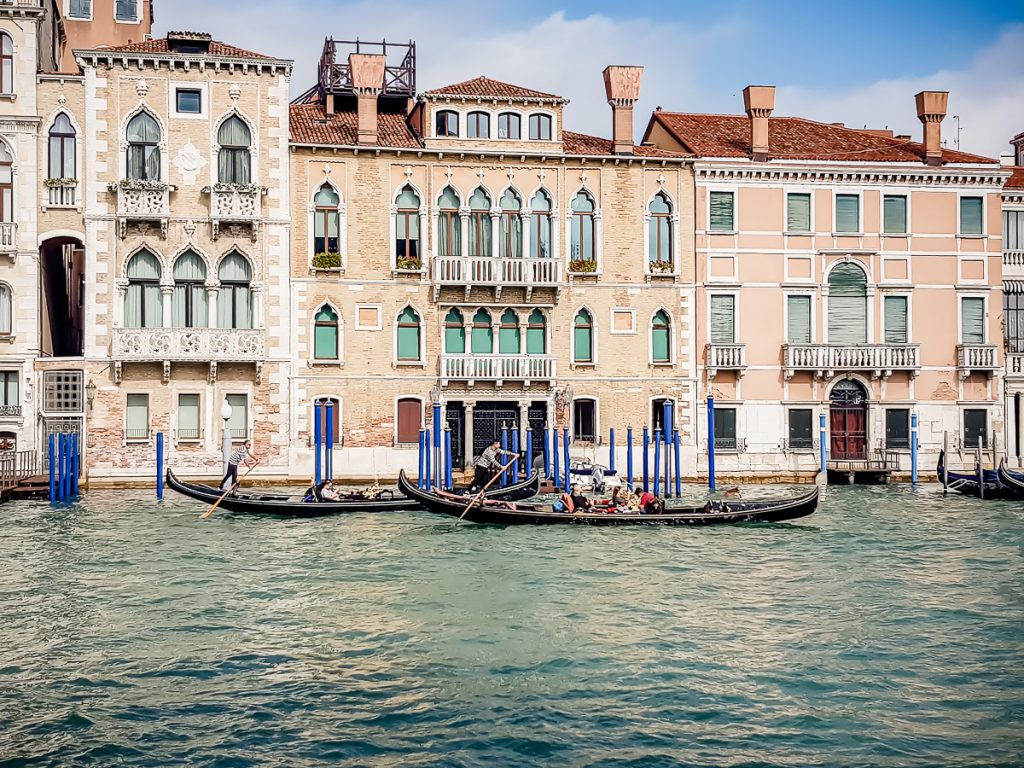
Okay, the gondolas didn’t always look the way we know them today, they did evolve gradually. Before they were bigger, they had more oars, to give just two examples.
In some paintings from about 500-600 years ago it is seen that the boat had the line closer to the water’s edge and its peaks (stern and bow) were less high than they are today. But what’s cool is that the gondolas had a brightly colored edge, adorned with luxurious applications! At that time, noble families were fighting each other to show their power. The one that adorned the gondola the most proved to be richer.
Because they had gone mad with adding a lot of precious ornaments to the boats, the Senate passed a law in 1562 prohibiting any ostentatious addition. The excessive display of wealth was over!
Since then, the gondolas have become uniformly black and the exterior decorations have been limited to 3 – a twisted tail, a pair of sea horses or other figurines and “ferro” = a kind of a comb placed at the front end of the gondola.
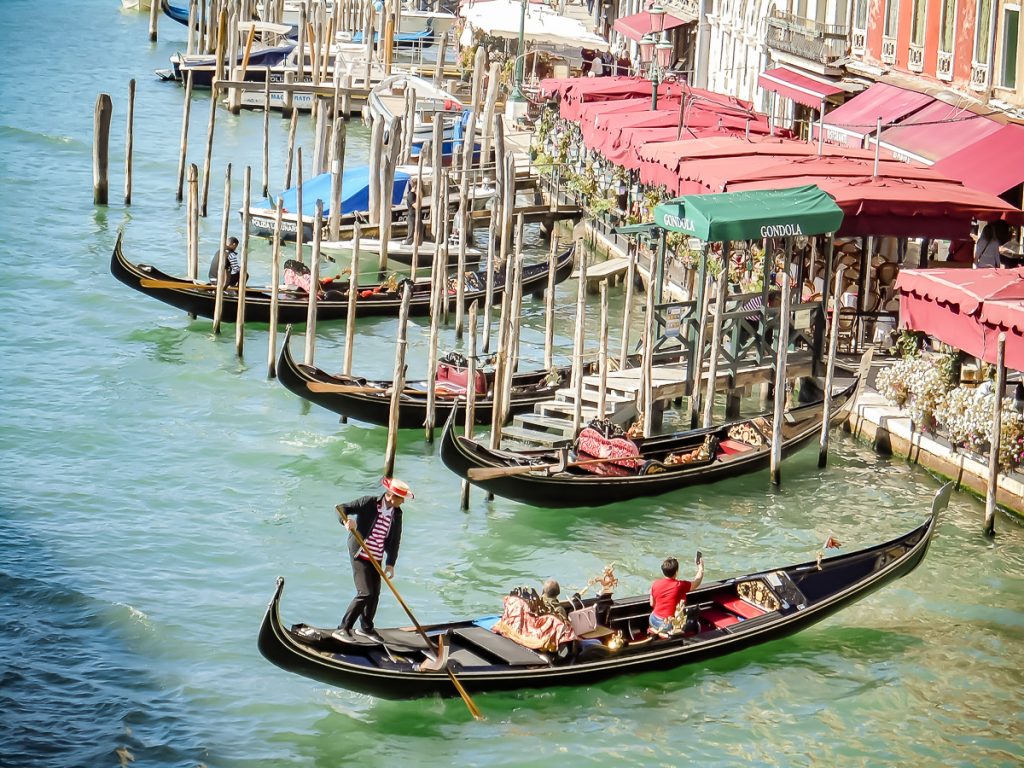
This is the most common theory, but there is another that says that the black of the gondola has completely different origins: a plague epidemic that broke out in the city turned the gondolas into a kind of mortuary boats. The bodies were transported in them and the Venetian government considered the gondolas to be inappropriately colored for such a reality, ordering to have them painted black. And so they remained, in memory of the tragedy that befell Venice.
Or wait, I found another explanation, the simplest ever: the black color of the gondolas comes from the fact that they were painted with tar, so that they become impermeable. Simple or what?…
The only colorful space is the upper part of the carcass, where various figures, animals and even miniature views of the lagoon appear.
Can you imagine that there were times when the gondola had a kind of cabin in its center? Its role was to protect passengers in bad weather. This special hood, covered with a black sheet and adorned with ropes and ribbons, had tiny windows and a small double hinged door.
There were also times when there were 10,000 gondolas in Venice. It happened at the end of the 19th century. Today there are about 445. That’s all.
THE GONDOLAS OF OUR TODAY
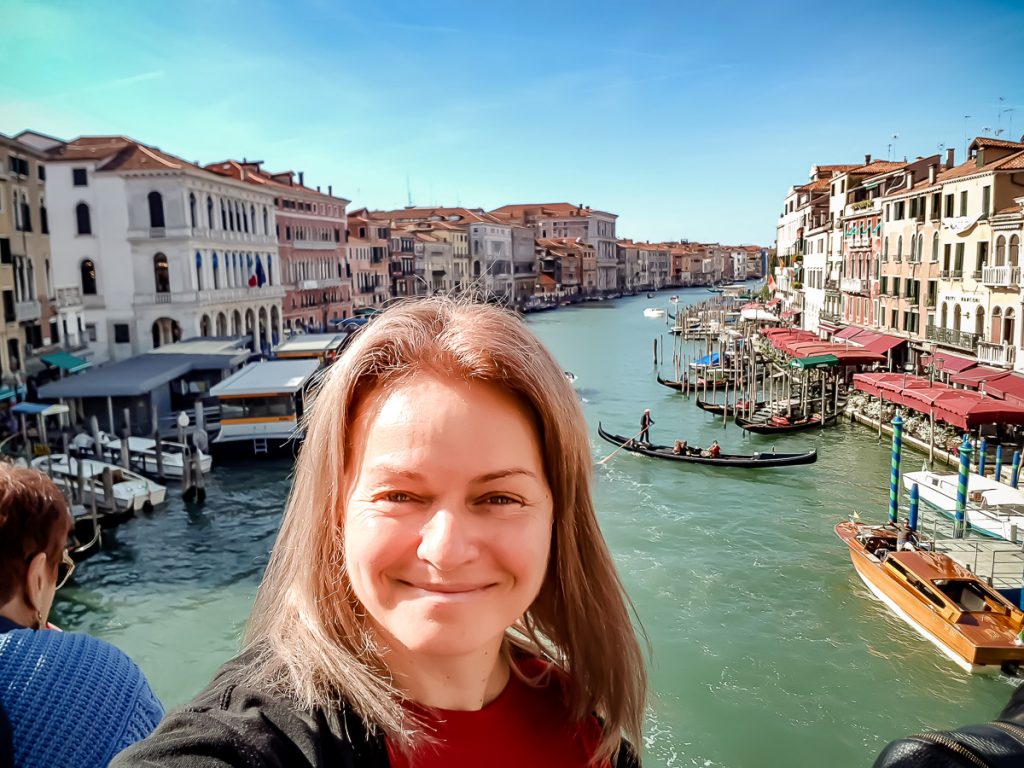
Today’s gondolas are all very similar. All weigh about 350-400 kilograms, have 280 components and each is made of eight different types of wood: lemon, larch, oak, fir, cherry, walnut, elm, mahogany.
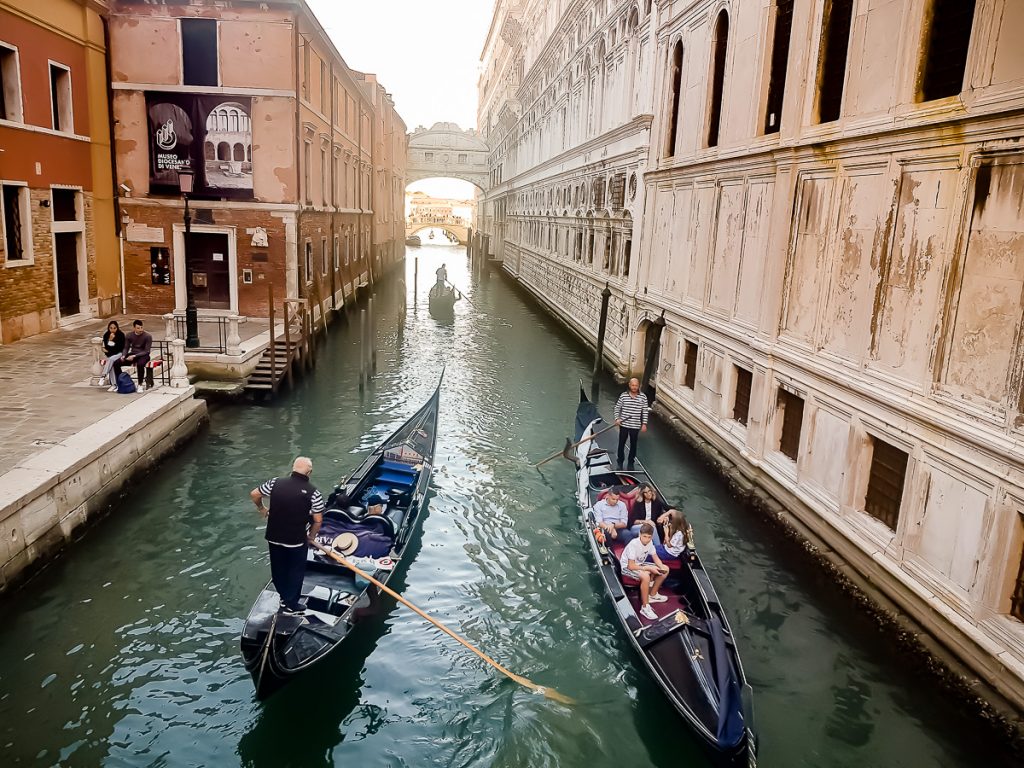
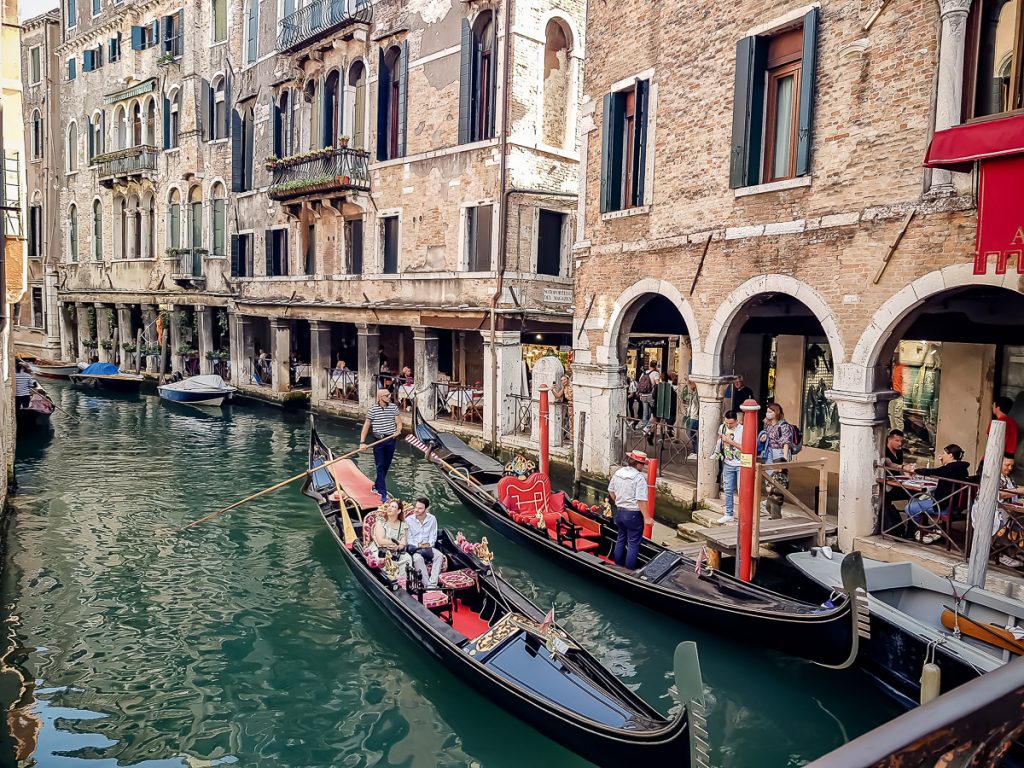
All have a beech wood oar and a “fork” – a oar support – carved, made to order, customized, which distinguishes gondoliers and allows the oar to be maneuvered in 8 different ways.
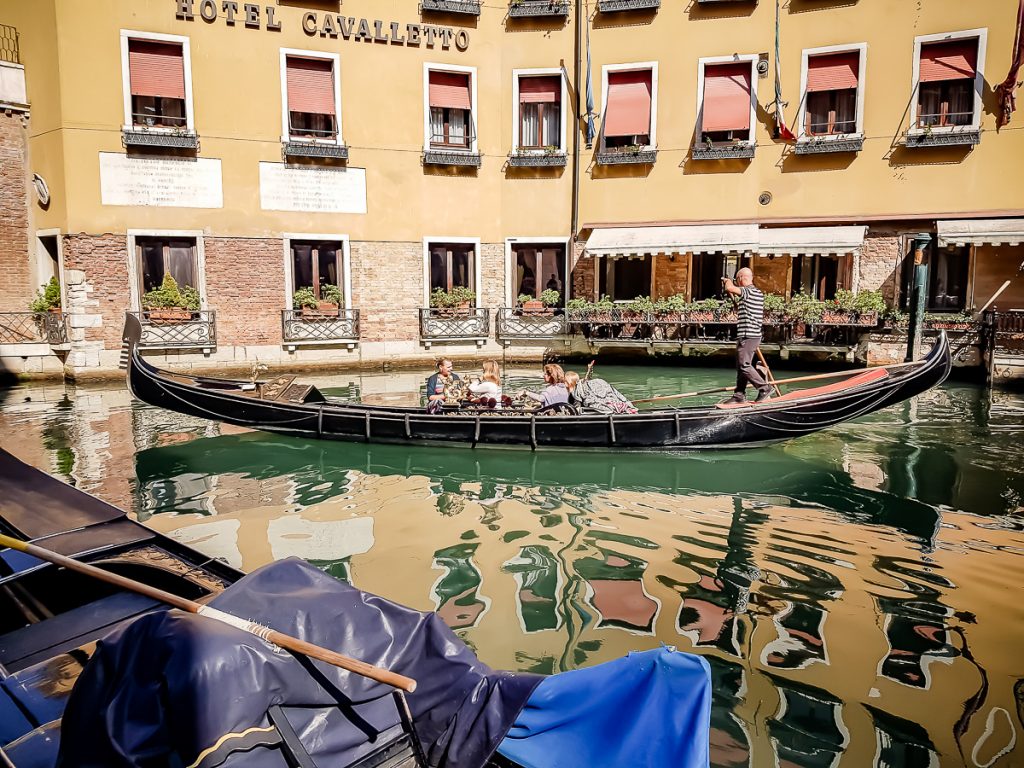
All are exactly 10.84 meters long and exactly 1.42 meters wide and all have one side 24 cm higher than the other. What?? Really? I’ve never noticed this!
This last feature, quite strange, was one of the last improvements in the evolution of the boat: a gondola owner from the 19th century came with this idea to compensate for the weight of the gondolier, who is standing on one side of the gondola.
At the bow there is also a metal accessory (bracket) to counterbalance the weight of the gondolier.
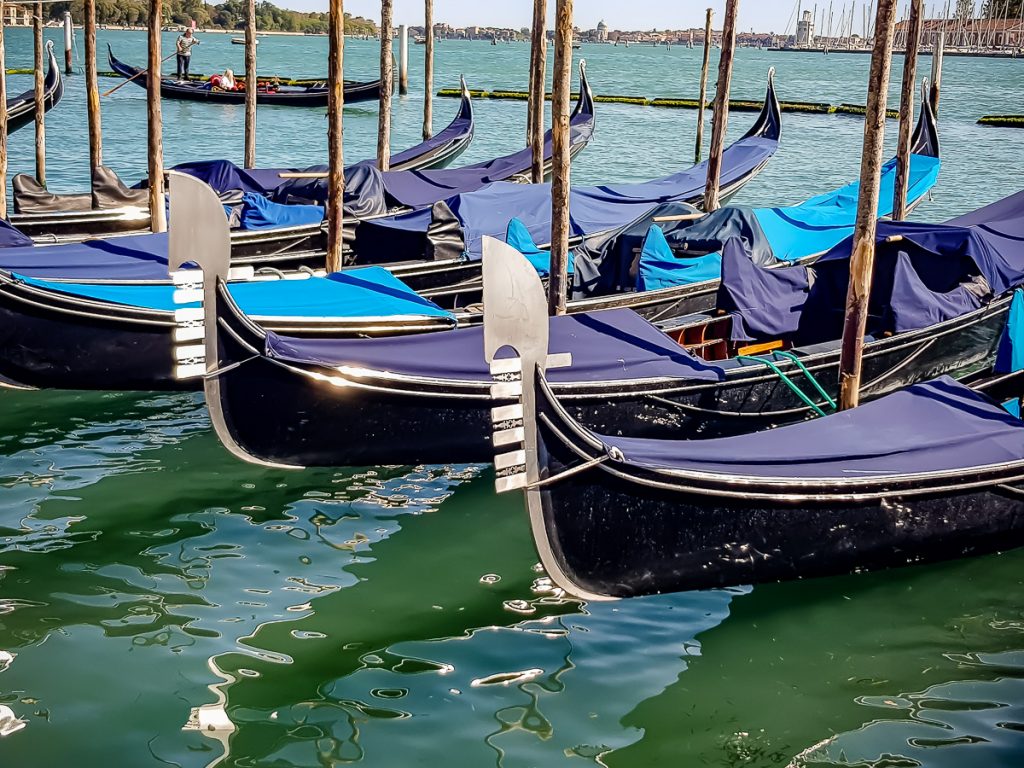
The iron comb placed there where Leonardo Di Caprio would have gone to scream out his happiness, don’t just act as a counterweight. It protects the bow of the gondola and, moreover, determines the height of the bridges and whether it can be passed under them.
(With it, the gondola is 11.10 meters long.)
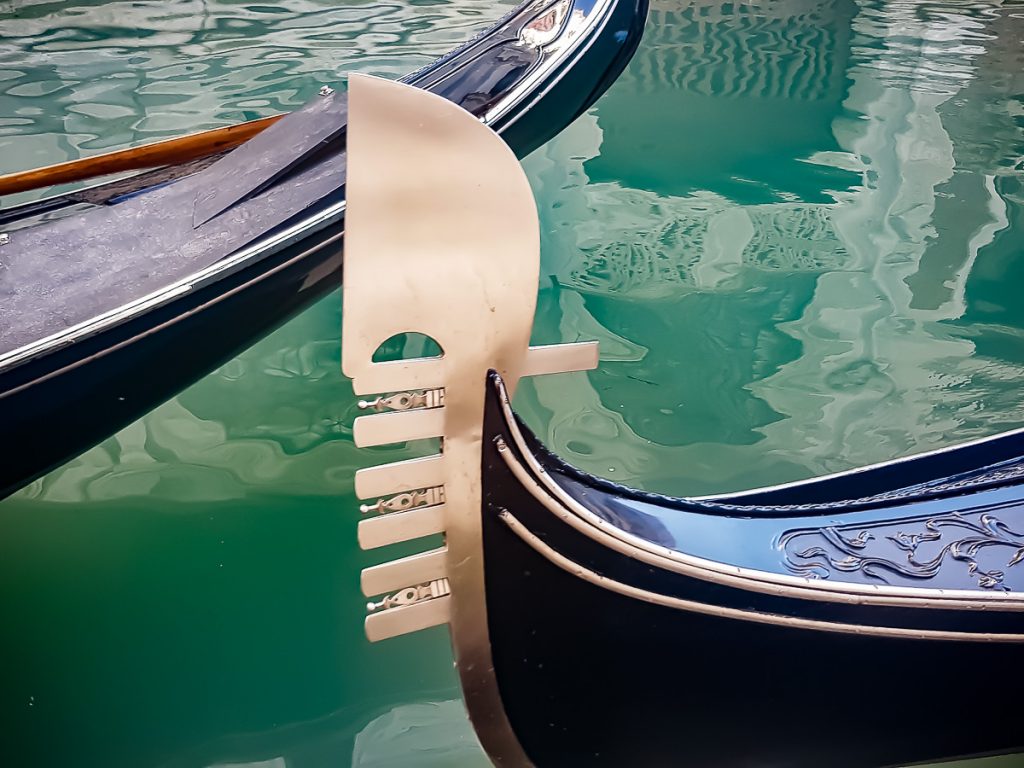
The 6 teeth of the comb would represent the 6 districts of Venice, and the only tooth on the opposite side would be the island of Giudecca (where I have been… I can’t wait to tell you!). And the rounded shape at the top would be the hat of the Doge of Venice.
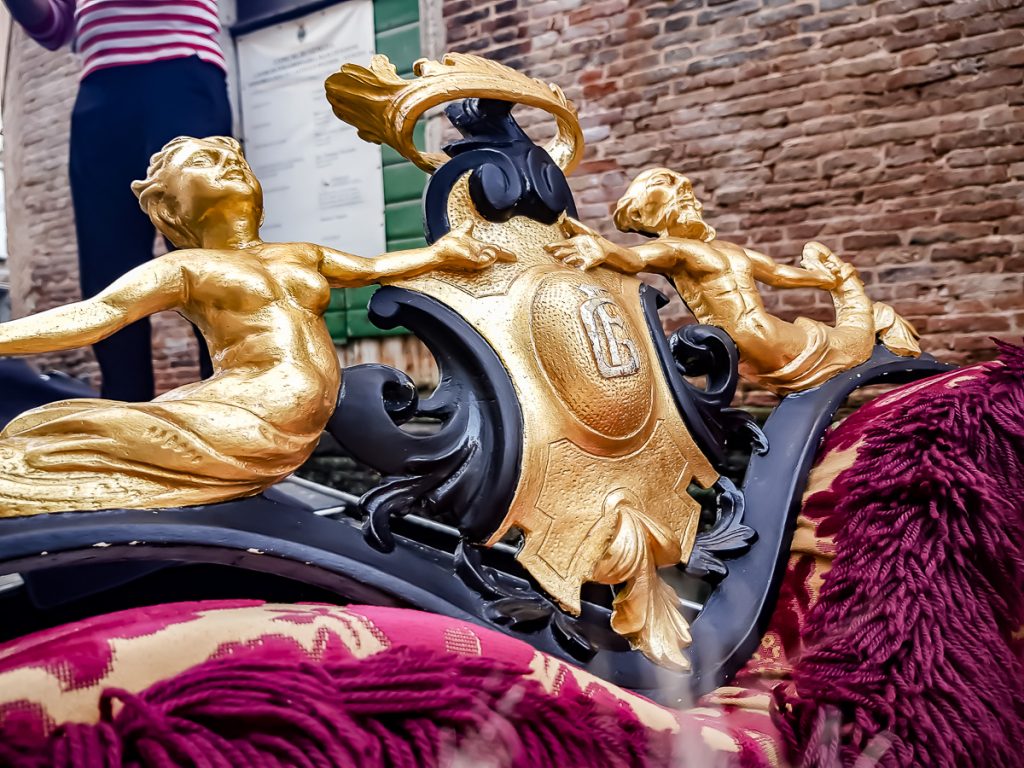
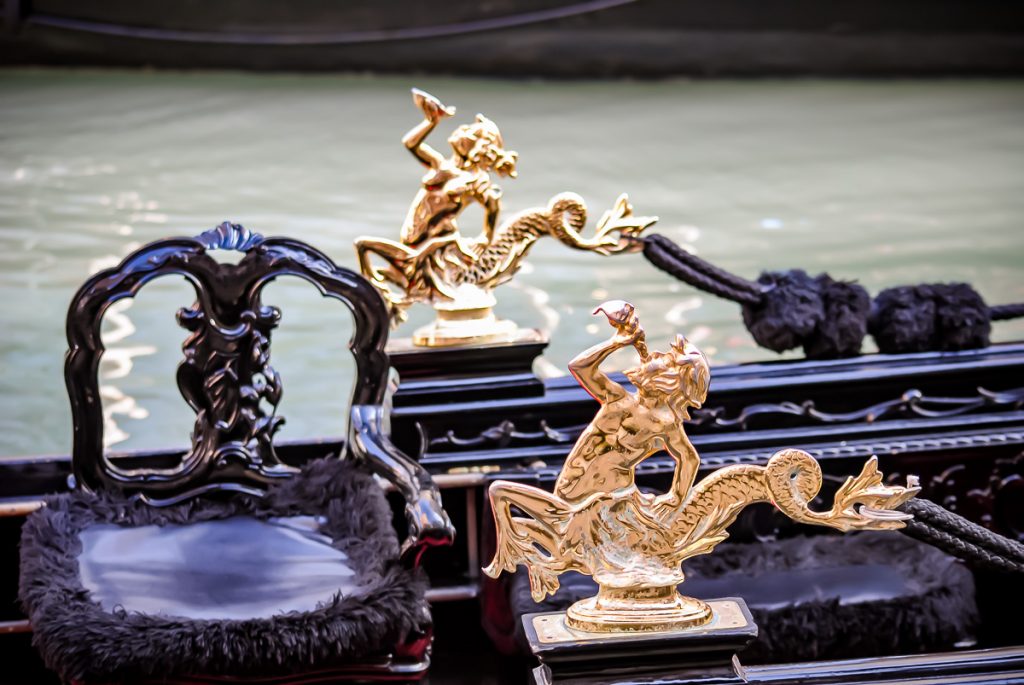
The exterior decorations, drastically reduced when the gondola turned black, remained a living proof of the builders’ imagination.
And I saw the “furniture” was different from one gondola to another, probably according to the inspiration and budget of each gondolier:
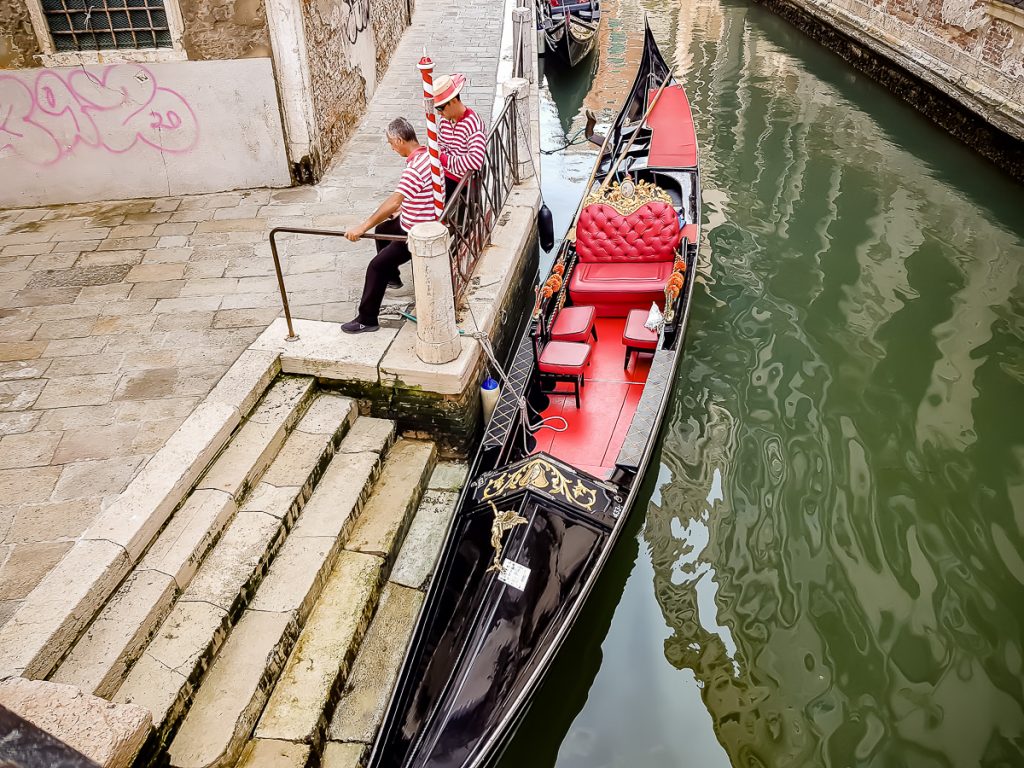
Want to buy a gondola? It costs around 40,000 euros. But the price goes up with the number and quality of the sculptures and accessories on it.
Tale a striped T-shirt or a white shirt, a straw hat with a scarf, a long oar and on your way you go! Just remember that the Venetian way to travel by gondola is standing. Do you have the muscles for this?…
Stay calm, don’t rush, as not everyone can become a gondolier. The profession is inherited from father to son. However, you can take their strict exams even if you don’t have a family tradition. But this is a rare thing.
One is rare, the other is impossible, so I said to myself: a woman to become a gondolier! I thought it was forbidden! Well, no, what do you know: a young woman broke the ice in 2009! Coming from a family of gondoliers, she managed to take all the exams and receive her license, although her father was not very happy with her choice. I really understand him: when she’s little she says she wants to be a princess, a ballerina, then you see her following in your footsteps and taking the oar from your hand J.
I haven’t seen her on the canals. I think the gondoliers all contributed and sent her on a long vacation, somewhere on the South Pole…
I understand that this caste of gondoliers is extremely powerful. All are gathered under the umbrella of an Association that has existed for almost 1,000 years and which ensures that the rules and traditions are respected.
GONDOLAS RIDE
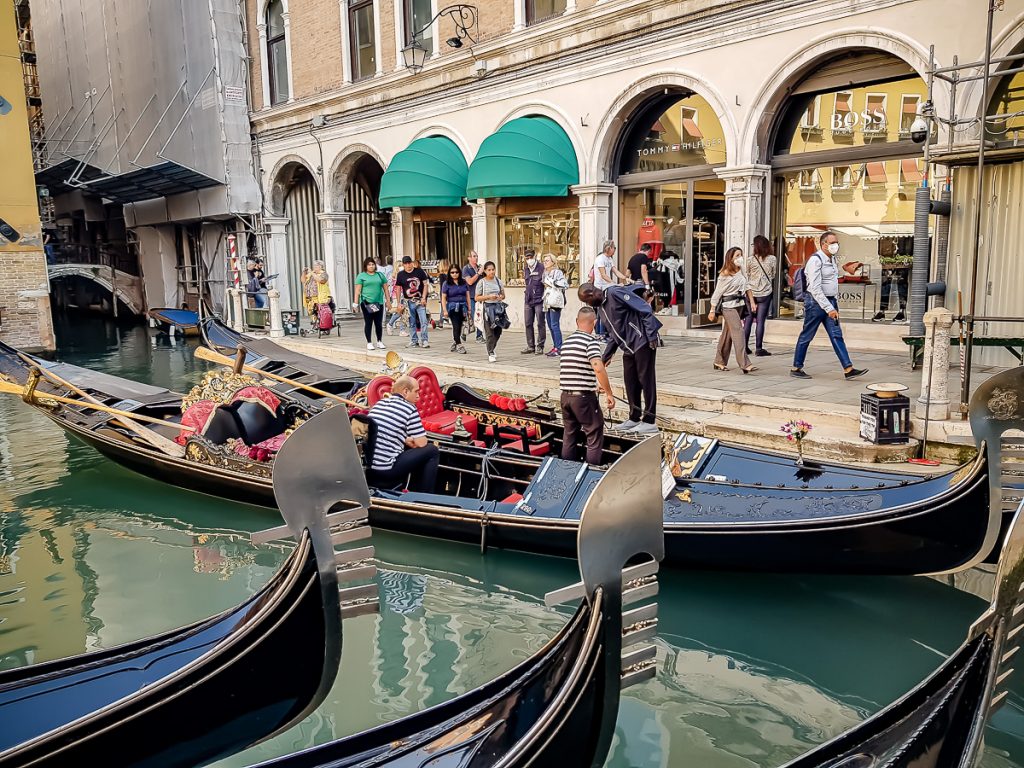
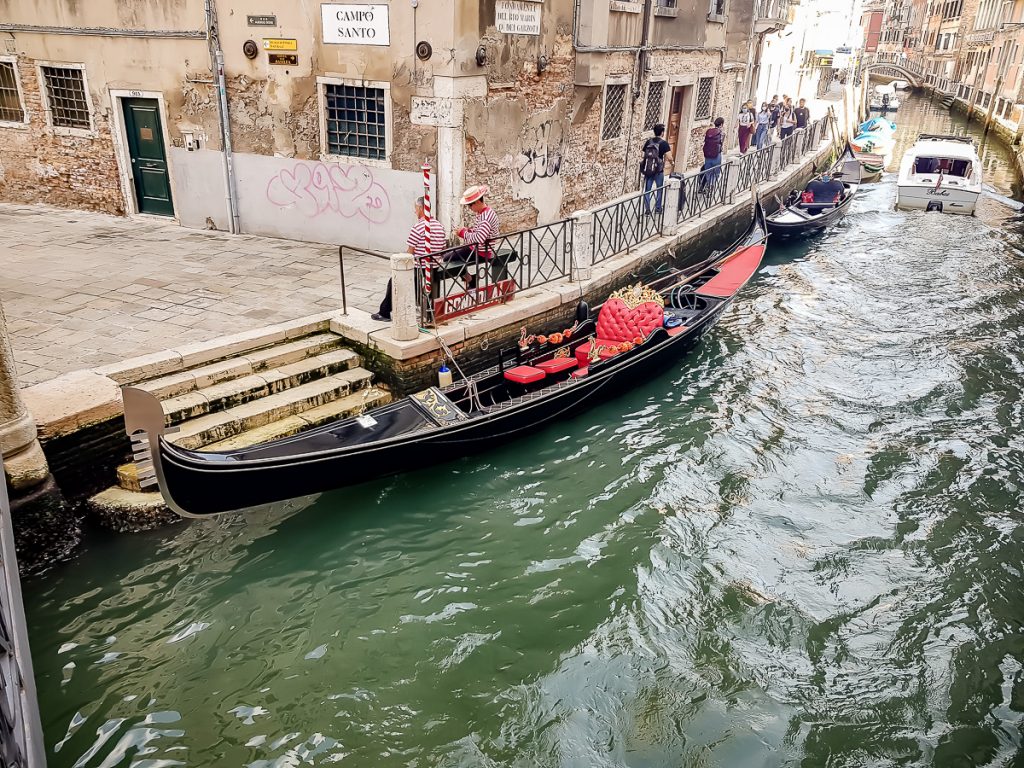
You can take a gondola from many points, near the Bridge of Sighs, near St. Mark’s Square, from many places on the Grand Canal, but also on the secondary canals, a little quieter than the crazy traffic on the main canal.
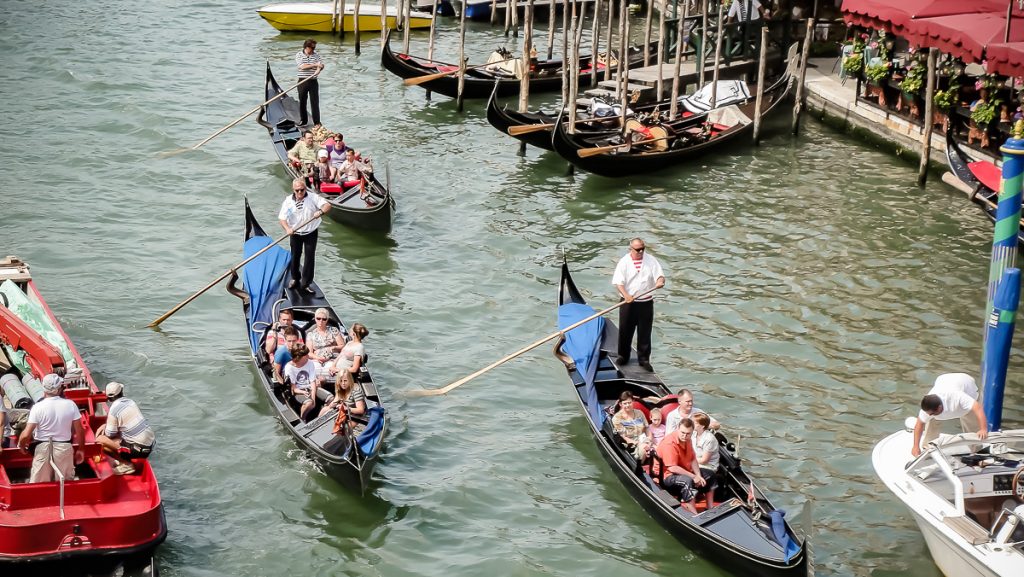
The maximum number of passengers that can be transported in a gondola is 6. However, I saw written with the marker on the price panels of the “stations” a maximum number of 5 people.
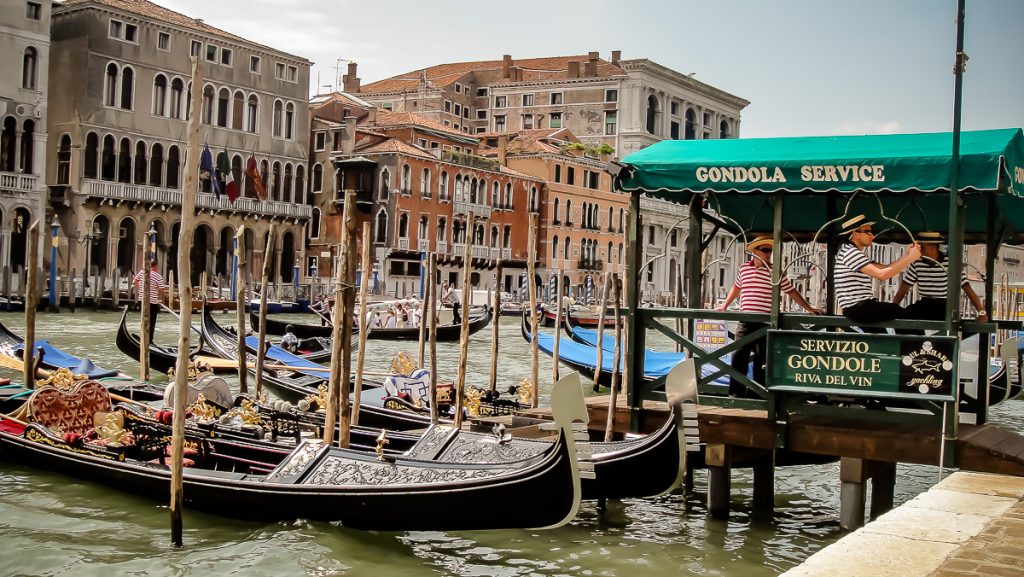
“This is Times Square,” a gondolier tells me in 2021, when I decided to board a gondola for the second time in my life. I’m near the Rialto Bridge, the old center of Venice. The gondolier who describes the place in this way wants to show you, the tourist, that you have chosen the starting point well, so that you don’t turn around and go to other colleagues, on other canals.
It was in vain my quick “casting” from afar, setting my eyes on a younger gondolier. Out of a group of 3, the young man did not have a word to say, the old man was in a state of chronic laziness and the third one came towards me, but he was not really in the mood. What I wanted the least. Because I’ve always wanted a guide I have on a guided tour to be passionate about what he does and full of information. Same in this case: I was hoping for a passionate gondolier, a master of words, with interesting data to offer in the 30 minutes that equal 80 euros… I didn’t want him to sing. I knew in advance that for “additional services”, money should be added.
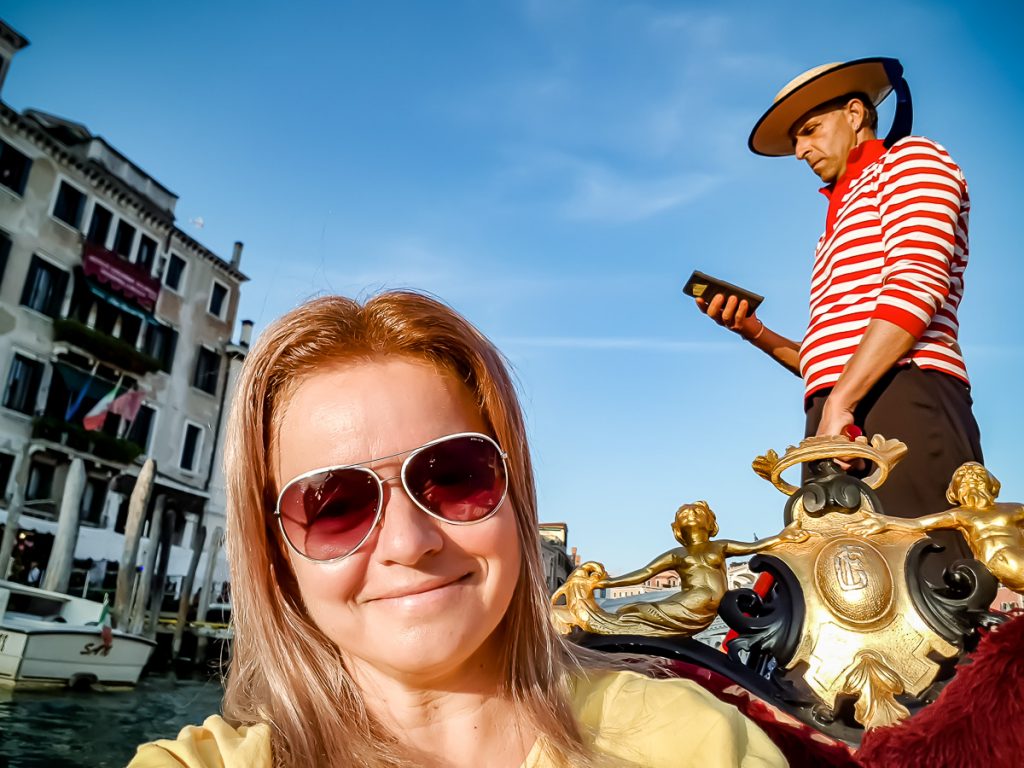
Well, I wasn’t lucky enough to get at least a guide. The man was quietly gliding his paddle, throwing a piece or two of information a couple of times, sometimes with the eyes in his phone, but otherwise, on a narrow and long canal we travelled on, he was in constant dialogue with a gondolier from behind. I was even embarrassed to turn back to him to ask him things, for fear of ruining his chat…
“This is Marco Polo’s house, nowadays a hotel.” – I hear. Where, where??? Hell, I saw it from the gondola in 2010 and I’m already confused, because it was a different building…
What do you know? None of them is Marco Polo’s house. Cool or what? Luckily I took a photo of the building with the marble plaque on it that read about it:
Marco Polo’s house no longer exists. Only its foundations, discovered in 1998 under the Malibran Theater, during the restoration and modernization works of the theater. The plaque is placed on the back of this building, marking the place where Marco Polo’s house WAS.
Good thing I found out the truth, as it was not enough that I did not find out anything in the 30 minutes of floating on the canals, I would be in error too about things hihi.
Bottom line: You don’t have to have high expectations when you get on a gondola. The tour has its charm, but you don’t know how lucky you are with the gondolier…
If you want to get the feel of the gondola without paying 80 euros, so that you won’t say that you don’t know what it’s like to float in sucha boat on the Venetian canals, there is (at least in one place where I saw it with my own eyes), a kind of stop where you wait to cross the Grand Canal from one shore to another by traghetto – a kind of gondola. It costs only 2 euros, more people get on it, like on a bus, and the crossing takes about 3-5 minutes.
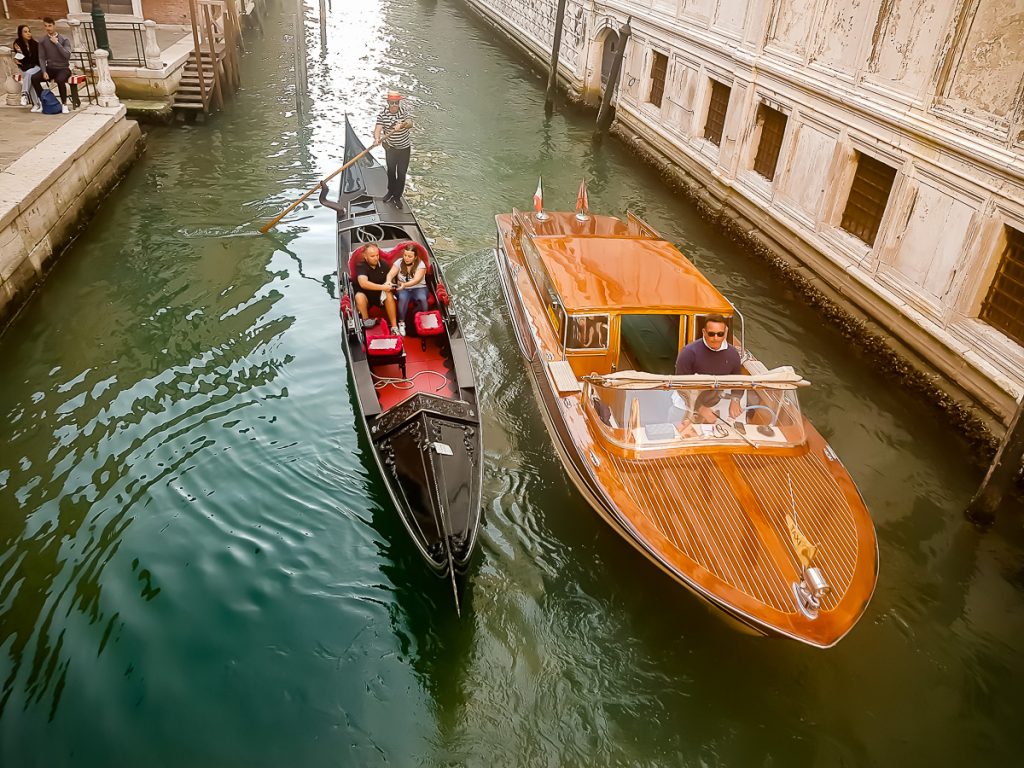
For those who want to push the boat out on vacation, the gondola ride remains in the top, but also a taxi on the water can be an option, especially in cases of great haste, because it goes faster.
THE “PARKED” GONDOLA
The 2020 pandemic brutally stopped the gondola traffic on the Venetian canals for many months. I arrived in Venice in March 2021 during a red code, and the images were shocking!
I don’t think there will ever be such a Venice again! You can see it here .
All, but absolutely all the gondolas hibernated ashore. The small canals were empty. Only the vaporetto (public transportation), some cargo boats and a few boats belonging to the locals were still taking Venice out of numbness.
Do you know when the gondolas stopped also running? When the lagoon froze! You wouldn’t say such a thing is possible. And yet, in the harsh winters of 1789, 1864 and 1929, the lagoon water froze. The crust formed was thick enough for people to walk or sled on it.
VENICE FROM MACAU
The uniqueness of the Venetian gondolas could not stay safe for a long time J.
For those who are far from Italy and who dream of gondolas, a solution has been found: the gondola ride through… malls!!!
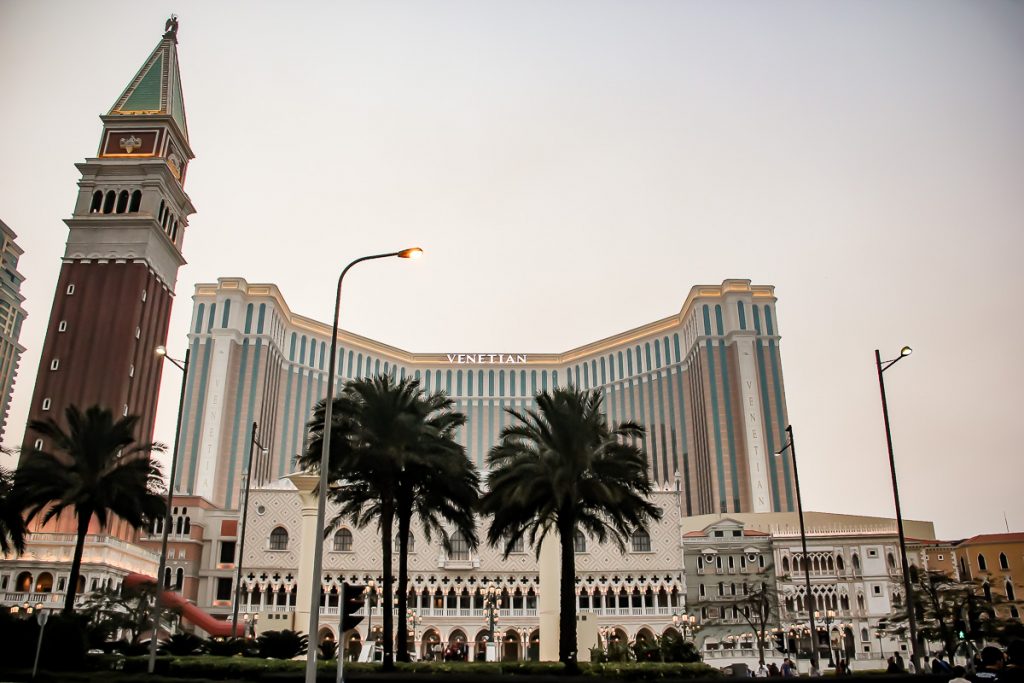
I didn’t get to Venice from Las Vegas, but I got to Venice from Macau!
I took a ship from Hong Kong for a day trip to Macau. Then by bus I got to Venetian – the famous luxury hotel + casino + mall and who knows what else.
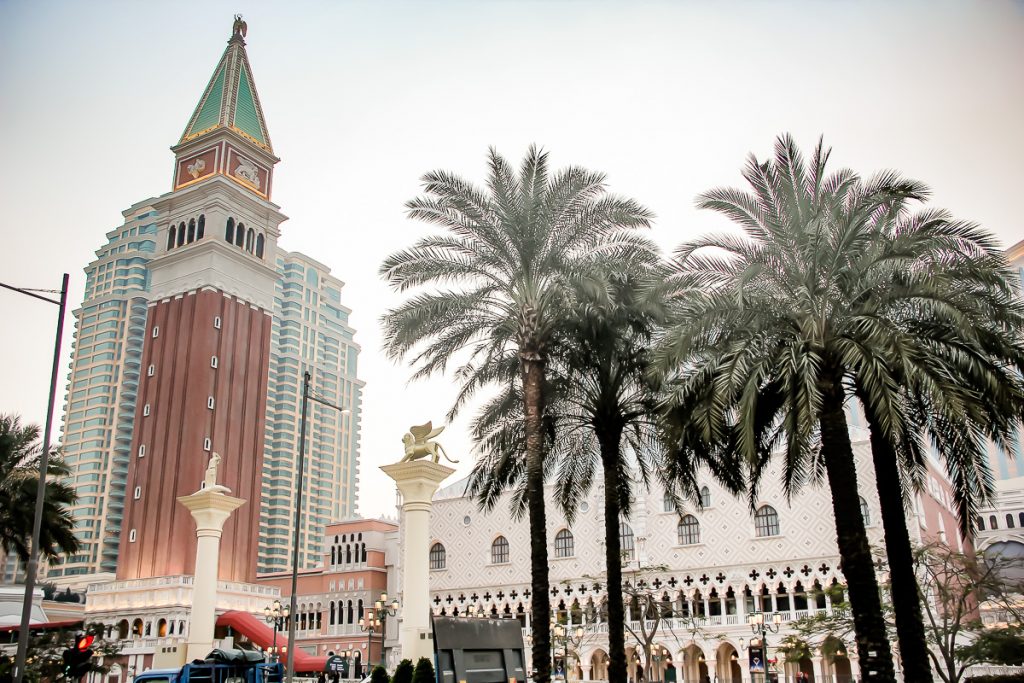
These people have a Venice right here, with the main tourist attractions, man!!! You can see the Doge’s Palace in the background, there’s Campanile too, you can also see the two columns near Piazza San Marco and, a little further on, is the Rialto Bridge. What else do you need? Well… the gondola!
To enter, practically, a mall and to see Venice, with palaces, with canals on which gondolas slide, this seems surprising to me!
Ok, just don’t imagine that I paid money to ride a gondola through the fake Venice… No way. I took the “streets” one by one, took a look at the shops, ate something and then I was happy to catch, right at the end, a song by the gondoliers from Macau:
These people must have been helped by their voices to pass the gondolier exam J.
VENICE FROM QATAR
In a long transit through Doha, Qatar, I took a tour in the red bus, visited the Islamic Art Museum, ate in Souk Waqif, but I also arrived at Villaggio Mall.
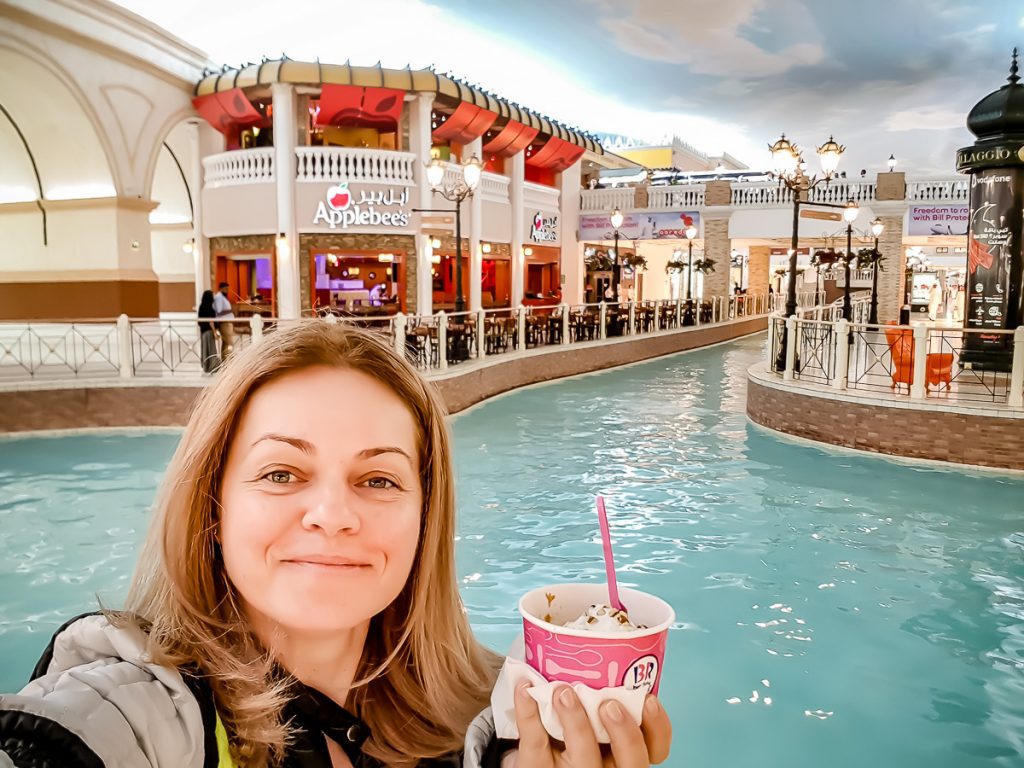
The gondola ride did not impress me much. But the ice cream, yes J.
The idea is that, apart from being shocked by what these people can do to attract customers and satisfy all their European pleasures, I had no desire to slide on the mall’s canals, with a false ceiling of clouds.
The real Venice has a lot of surprising, unique things! I tried to find some of them and I can’t wait to put them “on paper”.
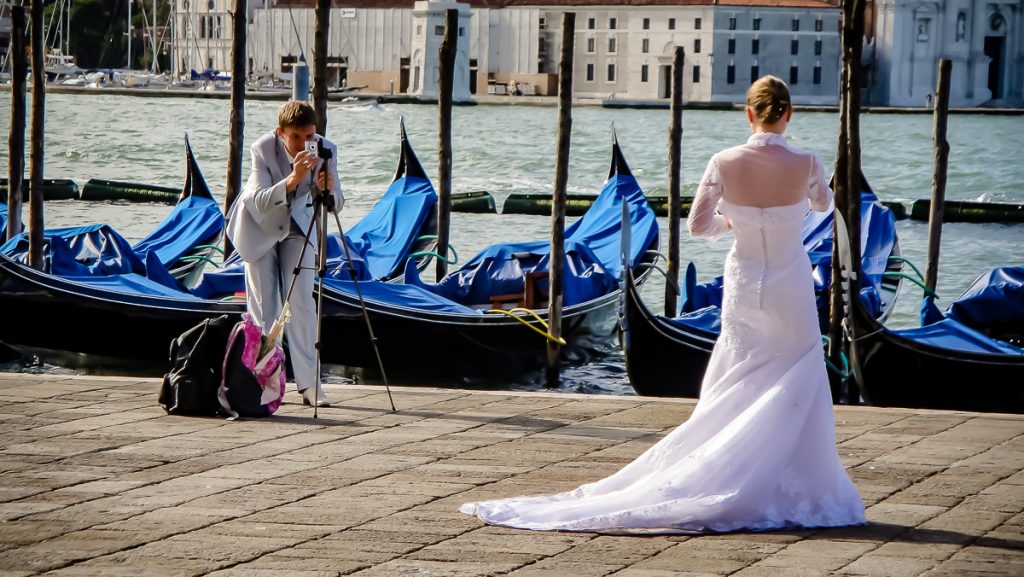
Until then, the best of luck to those who decide to have a newlywed photo shoot in Venice, Italy, in a lively setting, with many, many gondolas!


